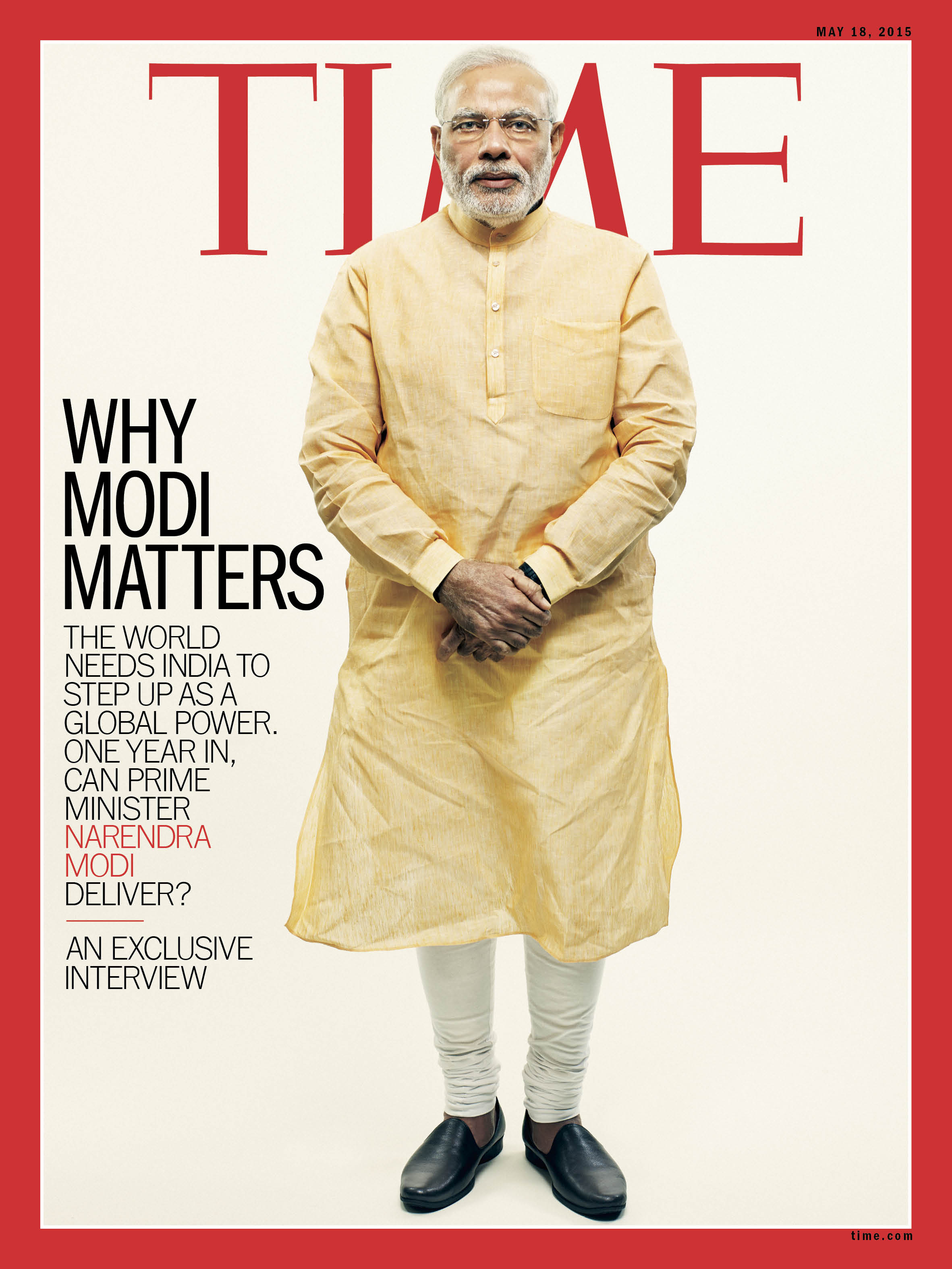
On May 2, Indian Prime Minister Narendra Modi sat down for an exclusive two-hour interview with TIME editor Nancy Gibbs, Asia editor Zoher Abdoolcarim and South Asia bureau chief Nikhil Kumar in New Delhi. Speaking mostly in Hindi, Modi talked about everything from his ambitions for India to the global war on terrorism to what personally moves him. Translated and condensed highlights, followed by the full interview:
On what he has learned so far about running India: The biggest challenge was that I was new to the federal government structures. Different departments tend to work in silos—each department seems to [be] a government in itself. My effort has been to break these silos down, [so that] everybody … looks at a problem in a collective manner. I see the federal government not as an assembled entity but as an organic entity.
On how he sees the U.S.: We are natural allies … [It’s not] what India can do for the U.S., what the U.S. can do for India … The way we should look at it is what India and the U.S. can together do for the world … strengthening democratic values all over.
On India’s sometimes tense relations with China: For nearly three decades there has been, by and large, peace and tranquility on the India-China border. Not a single bullet has been fired for over a quarter-century. Both countries are showing great maturity and a commitment to economic cooperation.
On the possibility of the Taliban’s returning to power in Afghanistan: The drawdown of U.S. troops is, of course, an independent decision of the American government, but in the interest of a stable government in Afghanistan, it would be important to hold consultations with the Afghan government to understand their security needs as the U.S. troops draw down.
On tackling the threat of terrorism: We should not look at terrorism from the nameplates—which group they belong to, what is their geographical location, who are the victims. These individual groups or names will keep changing. Today you are looking at the Taliban or ISIS; tomorrow you might be looking at another name.
We should pass the U.N.’s Comprehensive Convention on International Terrorism. At least it will clearly establish whom you view as a terrorist and whom you don’t. We need to delink terrorism from religion—to isolate terrorists who use this interchange of arguments between terrorism and religion.
Several countries used to see terrorism as a law-and-order situation of individual countries. We should see it as something that is a fight for human values.
On whether economic reforms have gone far and fast enough: [This time] last year, nothing seemed to be happening in the government. There seemed to be a complete policy paralysis … There was no leadership. My government’s coming to power should be viewed in the context of the developments of the 10 years of the last government vs. 10 months of my government … The whole world is, once again, excited and enthusiastic about India and the opportunities that India represents. Whether it is the IMF, the World Bank, Moody’s or other credit agencies, they are all saying in one voice that India has a great economic future.
(Read TIME’s cover story about Narendra Modi)
On whether he would like to have the kind of authoritarian power that China’s leader has: India is a democracy; it is in our DNA. As far as the different political parties are concerned, I firmly believe that they have the maturity and wisdom to make decisions that are in the best interests of the nation. So if you were to ask me whether you need a dictatorship to run India, No, you do not. Whether you need a powerful person who believes in concentrating power, No, you do not. If you were to ask me to choose between democratic values and wealth, power, prosperity and fame, I will very easily and without any doubt choose democratic values.
On India’s religious diversity, which some citizens believe is under siege: My philosophy, the philosophy of my party and the philosophy of my government is Sabka saath, sabka vikas—“Together with all, progress for all.” Take everybody together and move toward inclusive growth. Wherever a [negative] view might have been expressed [about] a minority religion, we have immediately negated that. So far as the government is concerned, there is only one holy book, which is the constitution of India. The unity and the integrity of the country are the topmost priorities. All religions and all communities have the same rights, and it is my responsibility to ensure their complete and total protection. My government will not tolerate or accept any discrimination based on caste, creed and religion.
On what influences him: [Chokes and tears up.] This touches my deepest core. I was born in a very poor family. I used to sell tea in a railway coach as a child. My mother used to wash utensils and do lowly household work in the houses of others to earn a livelihood. I have seen poverty very closely. I have lived in poverty. As a child, my entire childhood was steeped in poverty. For me, poverty, in a way, was the first inspiration of my life … I decided that I would not live for myself but would live for others.
***
Read the full interview:
Prime Minister of India Shri Narendra Modi: Welcome to India, first of all. This is your first visit to India and I am delighted that on your very first visit we have a chance to meet. I hope this opportunity, this visit of yours, will also provide you an occasion to return to India more often.
TIME: Thank you, we hope so as well. I should start by wishing you a happy anniversary. It is almost one year now in office. So, I am curious about what has surprised you most. You often talked about being an outsider. Now that you are the ultimate insider, what have you seen about the strengths and the opportunities and the obstacles that you face in the program that you are hoping to pursue?
Modi: For more than forty years now, I have had an opportunity and chance to travel all across India. There would perhaps be more than 400 districts of India where I have spent a night. So I am fully aware of the strengths of India, I am fully aware of the challenges that we face, I am not unaware of them. What was relatively new to me was the Federal government structures, the systems, the way we operate at the Federal level. That was a part which I was not aware of till I entered the government here.
See The History of US—India Relations in 12 Photos
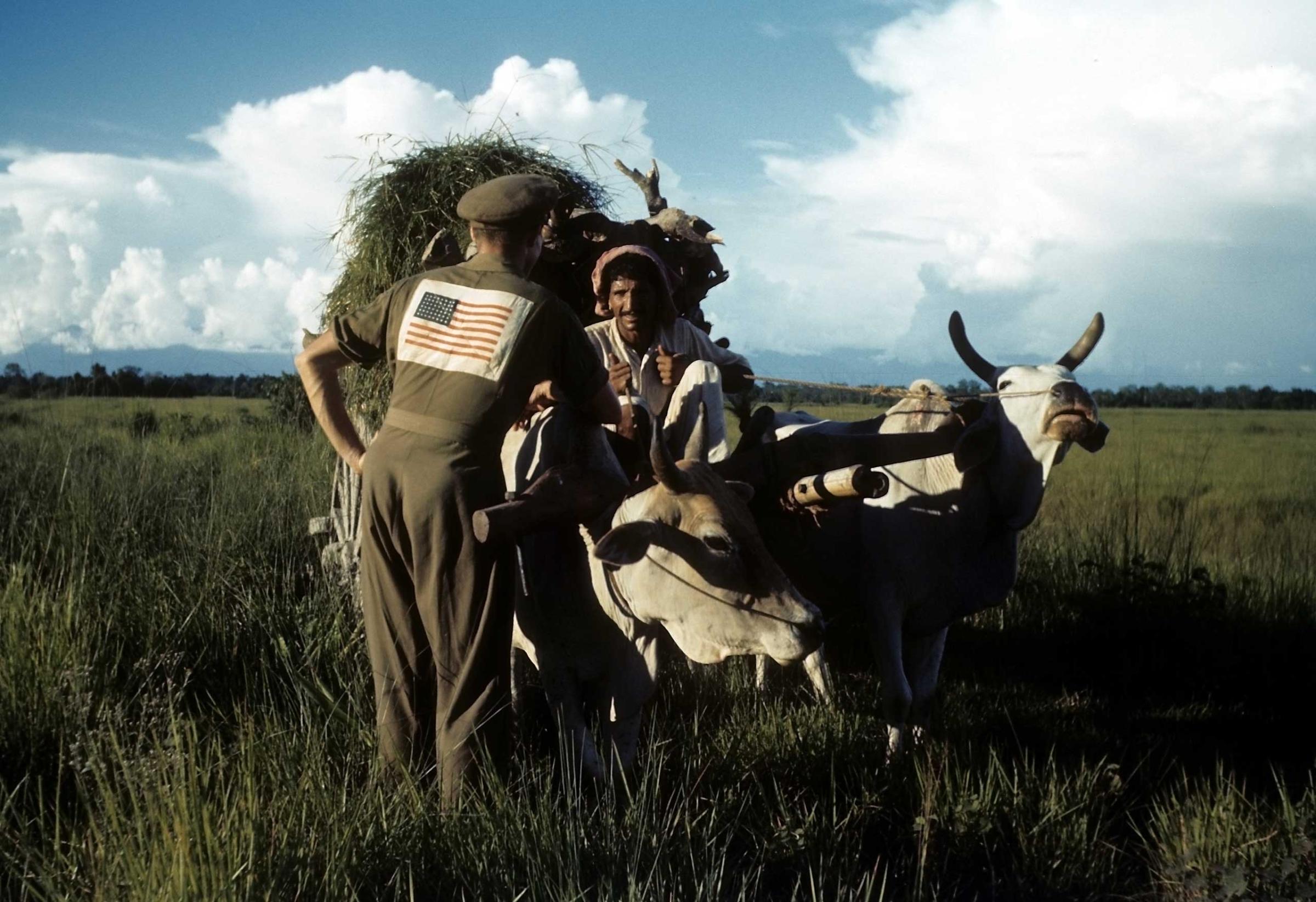
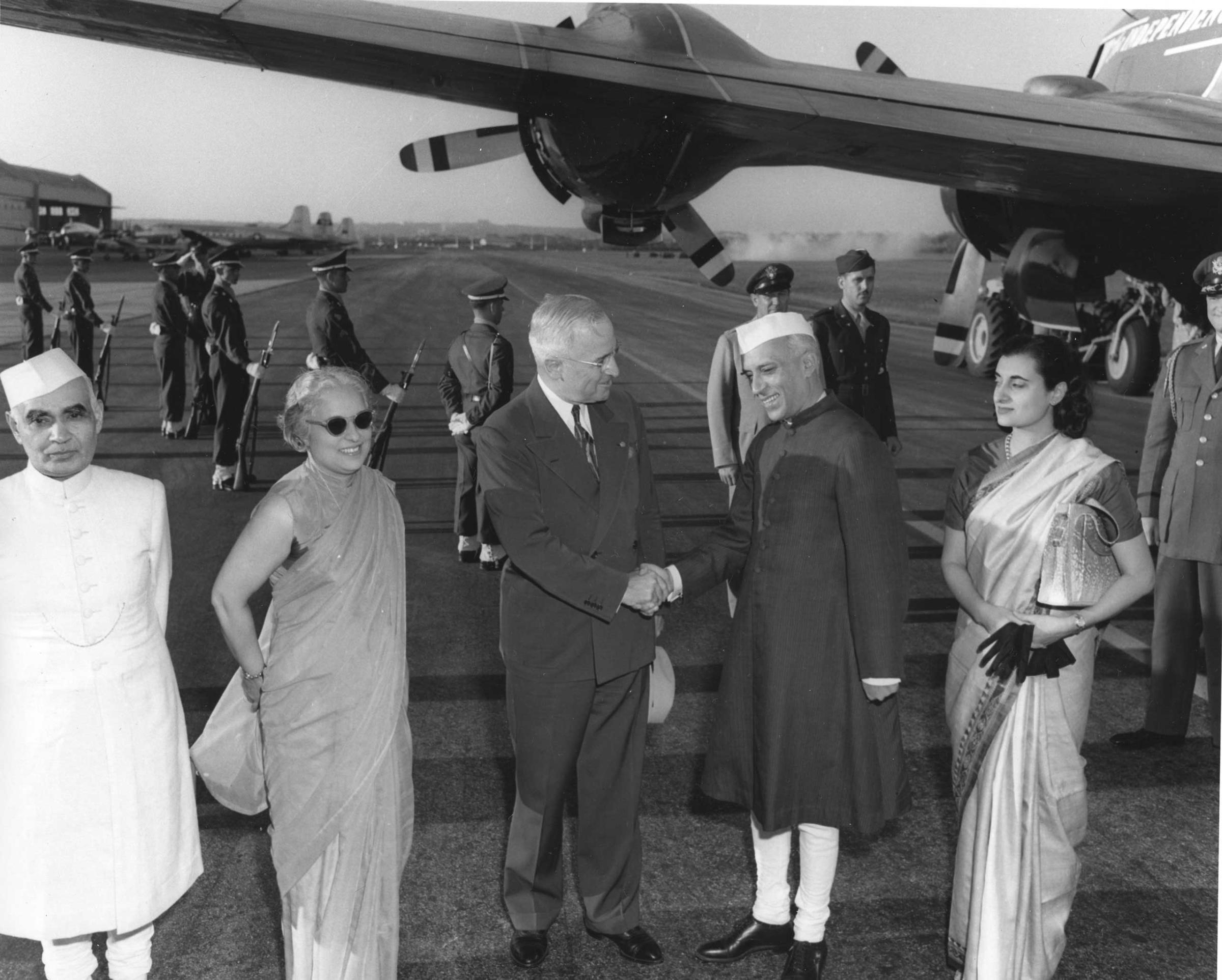
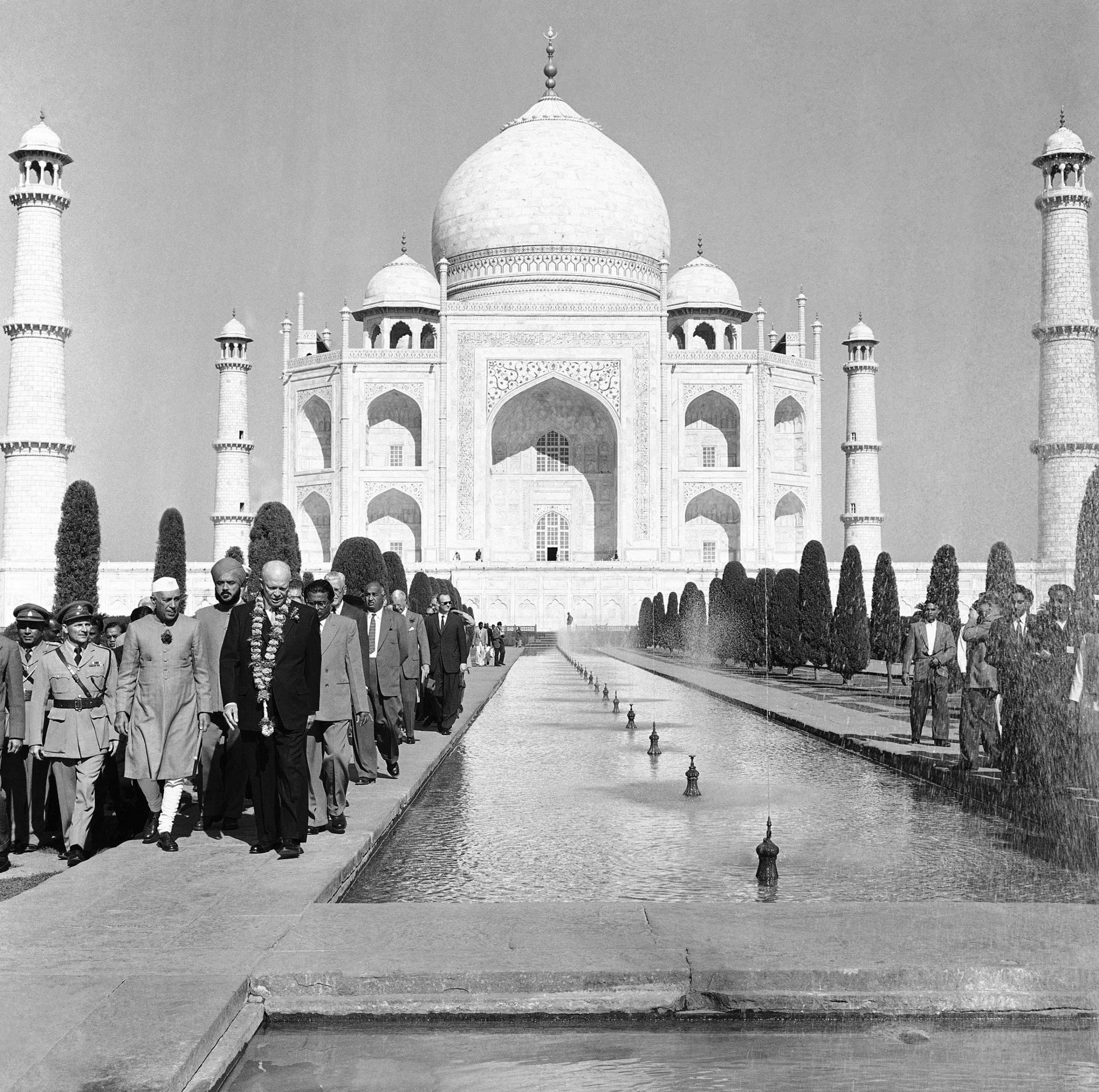
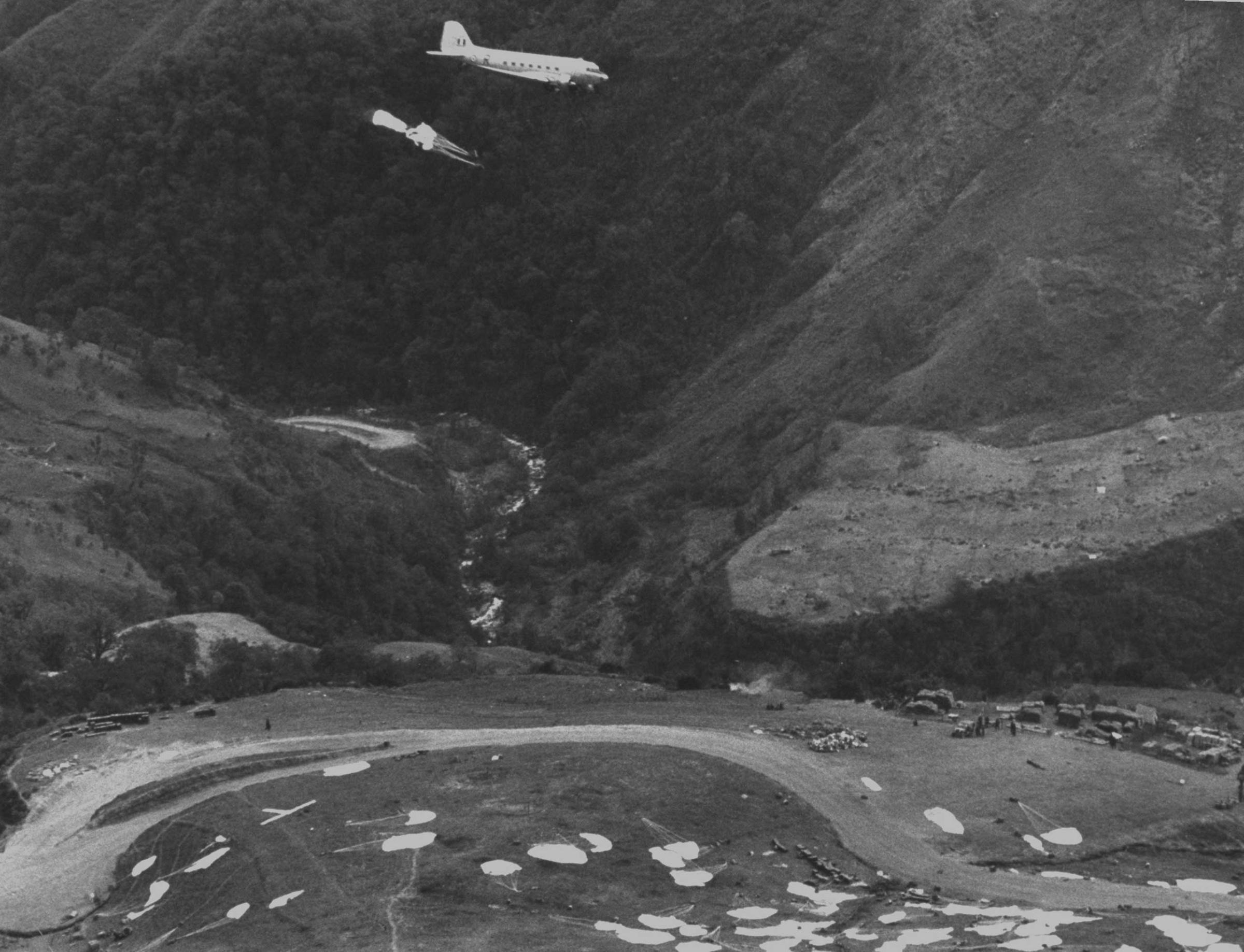
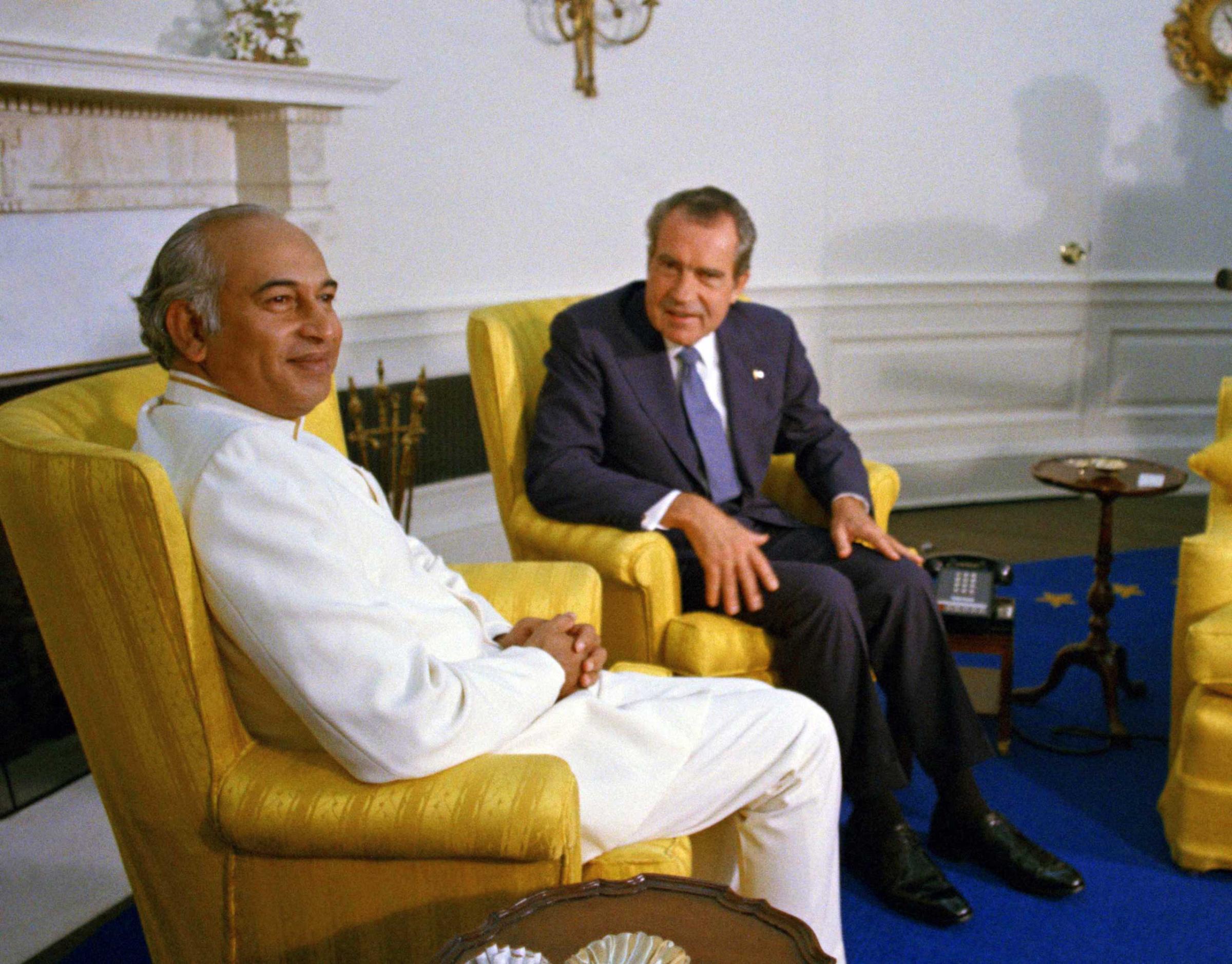
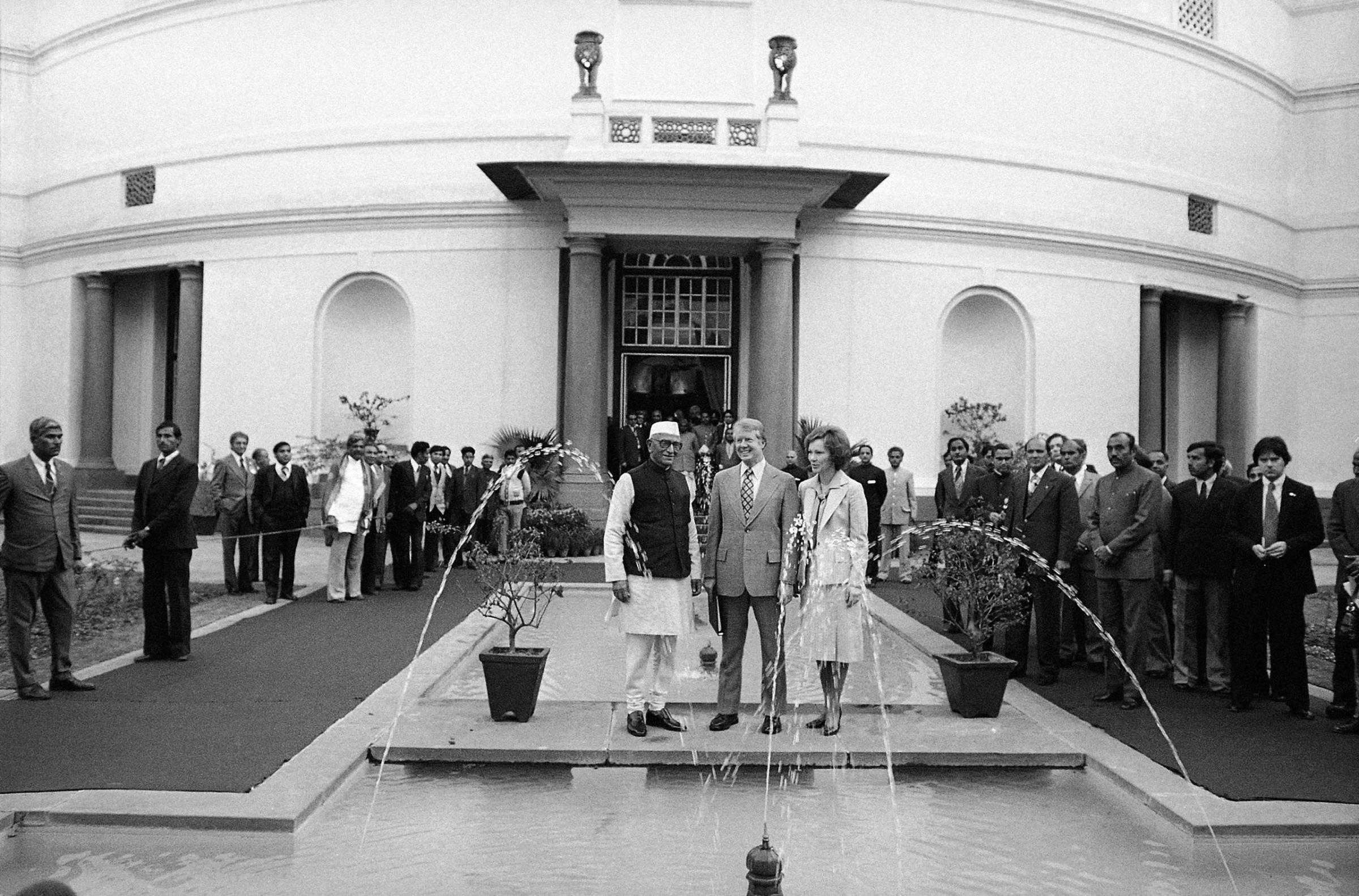
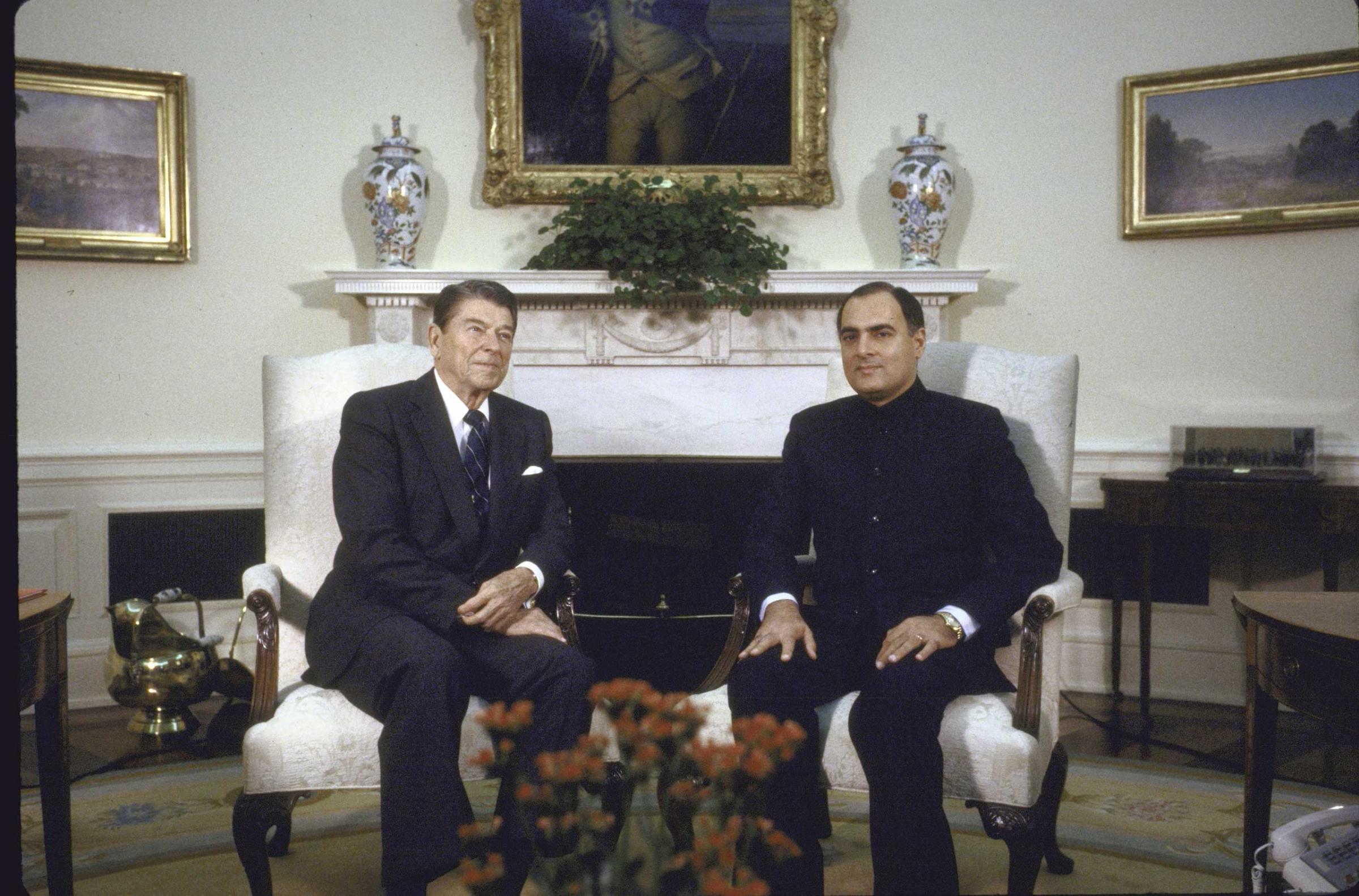

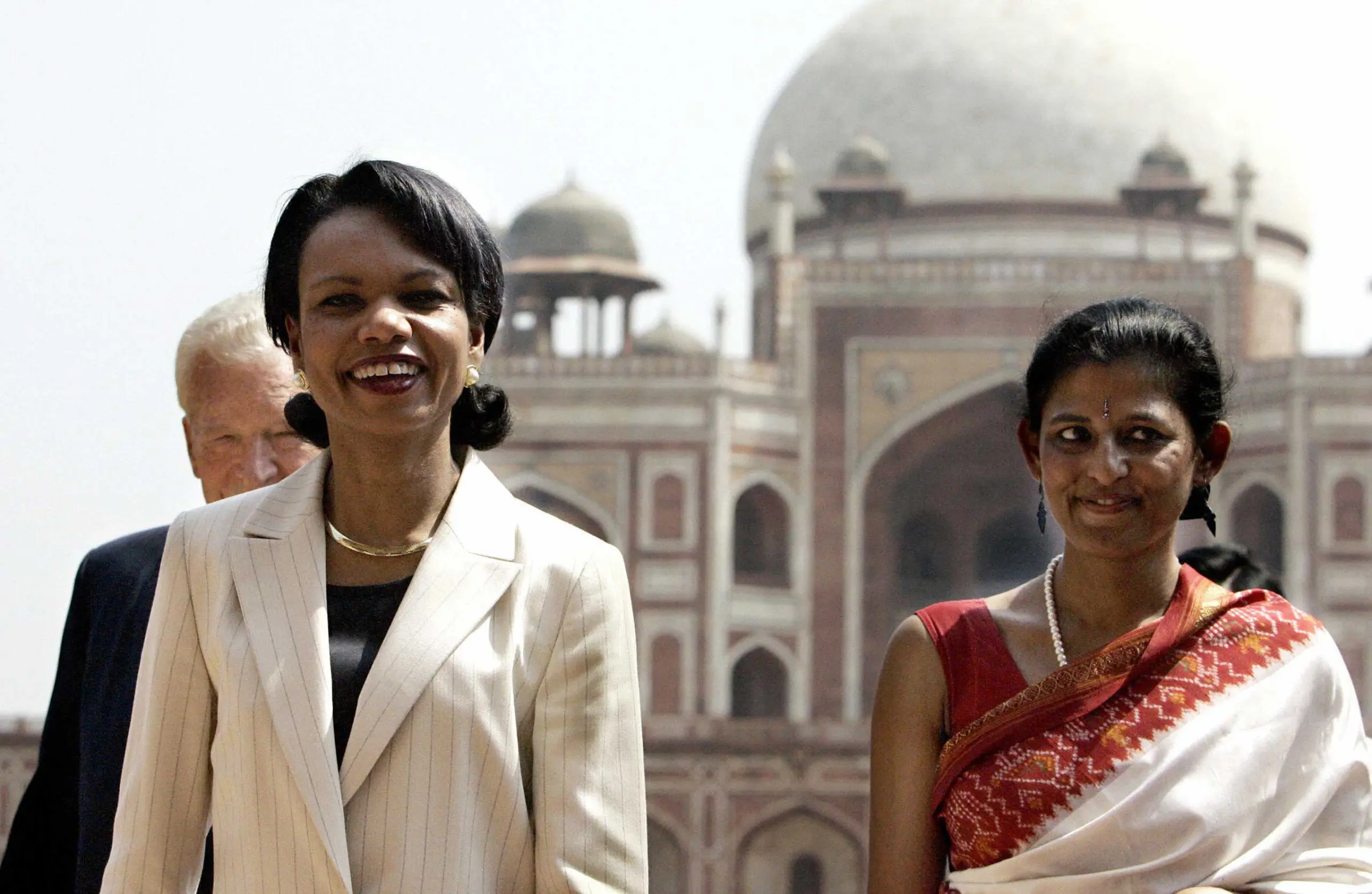
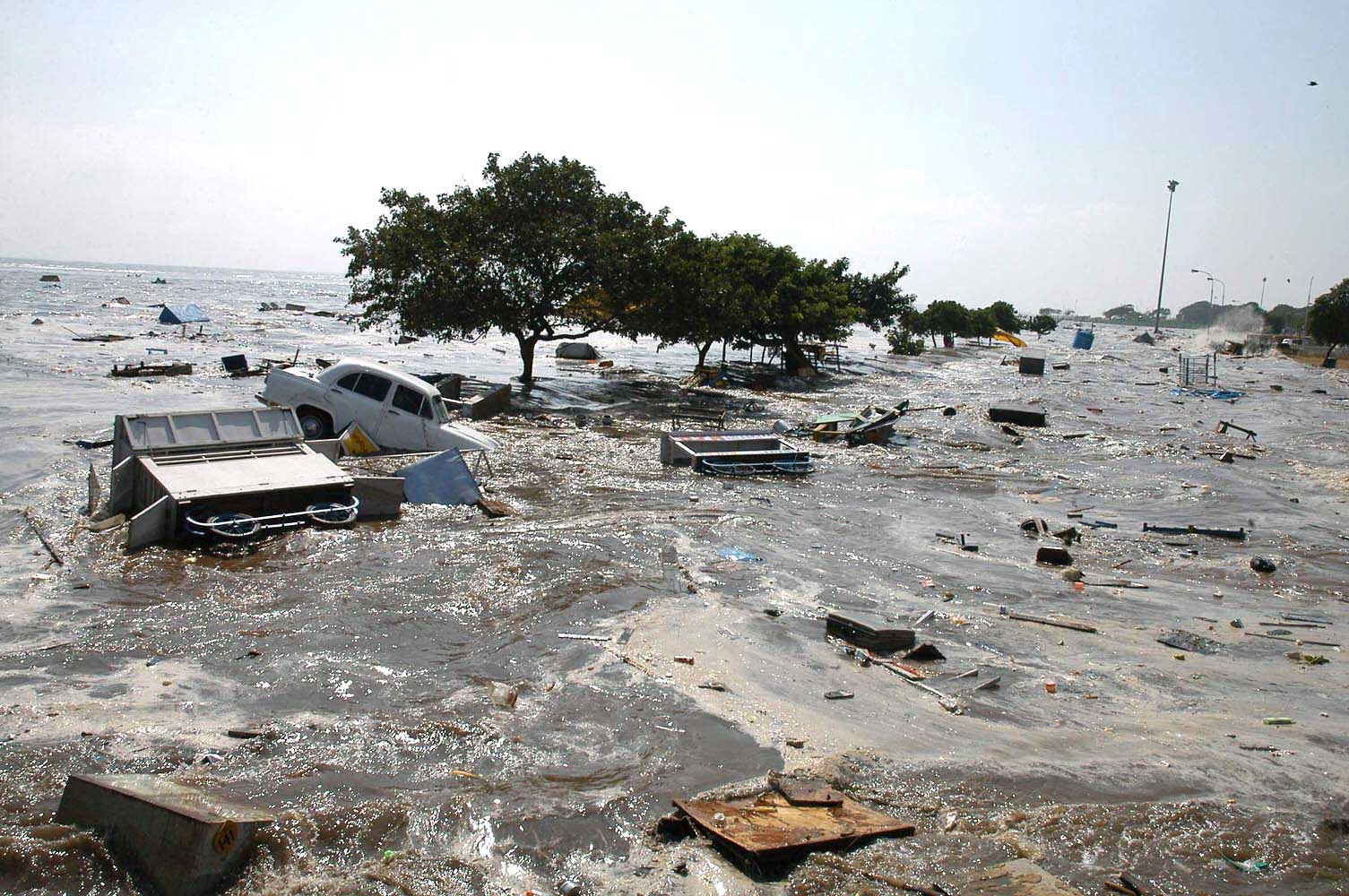
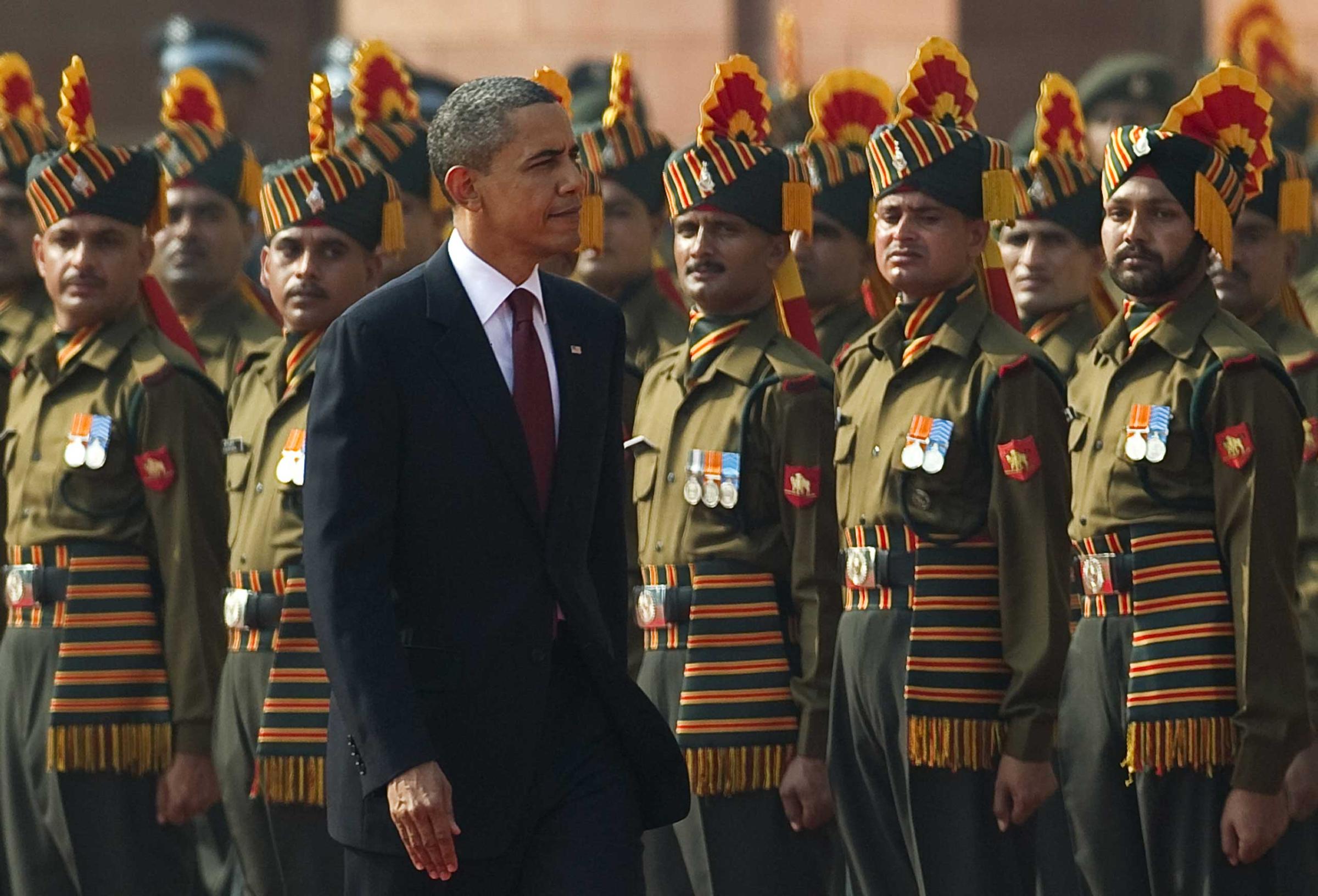
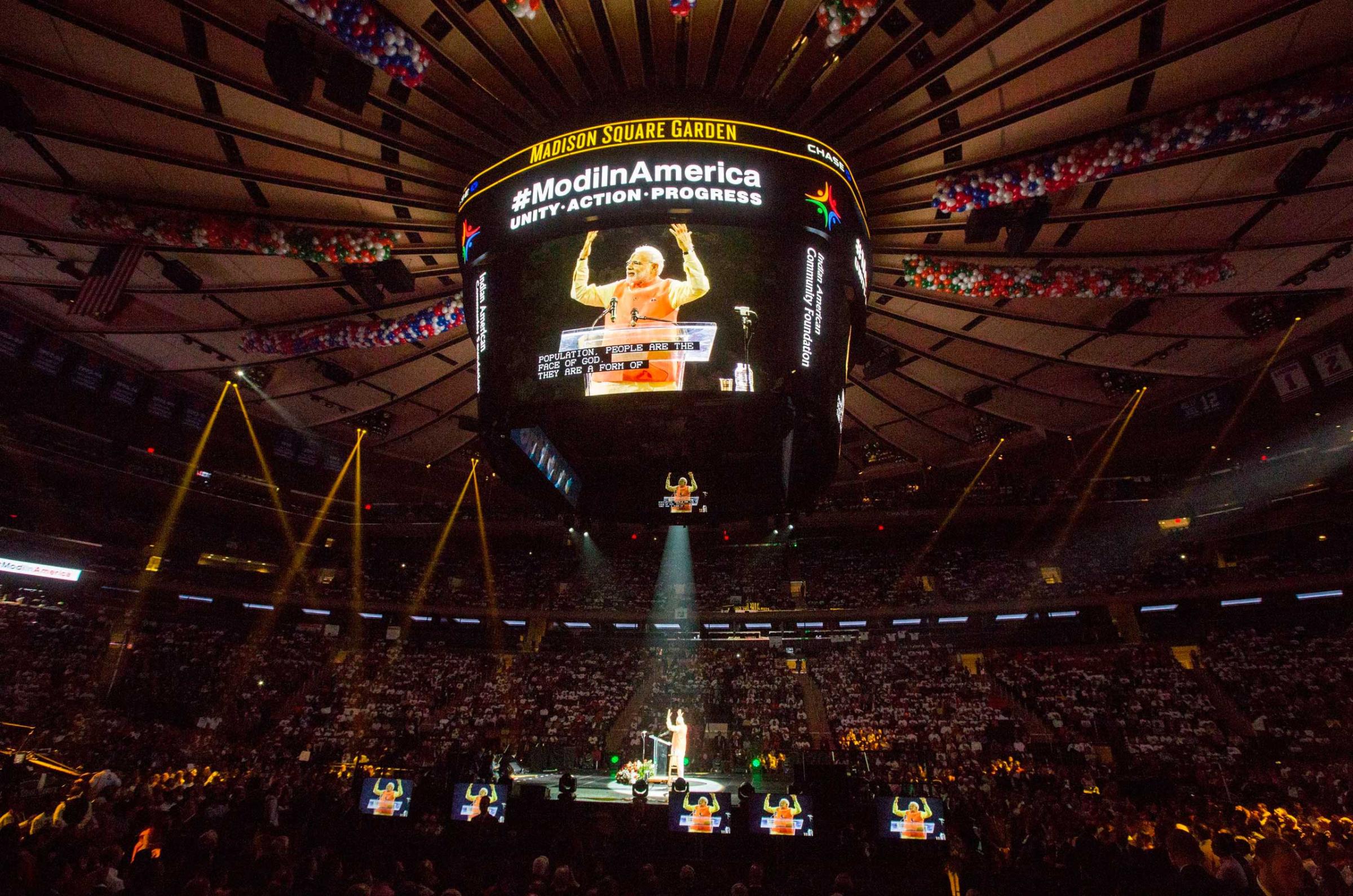
The biggest challenge I think was that I was new to the Federal government structures. They were new to me, I was new to them, so there was a question of understanding each other’s perspective. But within a very short time I have bridged the gap through very focused and concentrated actions. There is now a meeting of minds. I understand them very well, they understand me very well. Because of that, within a very short period of time, we have been able to establish a smooth, seamless working mechanism within the Federal structure.
I was Chief Minister of the State of Gujarat for a long period of time. I knew very well what the Central government thought about the States of India and what State governments thought of the Federal government. I wanted to change this thought process, the fundamental thought process as to how the Federal Government and the State governments perceive each other. I wanted the Federal Government and the State Governments to work together for the country. I basically wanted to bring about a complete change in the thinking that Federal government is a giver to the State government, and the State government is a recipient of the largesse from the Federal government. And I think within a very short period of time, I have managed to achieve that objective to a very large extent.
I coined a term for that, which I call cooperative Federalism. I took it actually a step further and called it cooperative competitive Federalism. Essentially the concept is that it would encourage different State governments to compete with each other for the growth of the country. What essentially I have tried to do, and I think we have managed to do that, is to convert the country from a single-pillar growth nation to a nation that has 30 pillars of growth; these are the 29 States of India and the Federal centre.
Similarly, it was my experience after I entered the Federal government that different departments of the Government of India tend to work in silos. Each department seems to work as a Government in itself. The reason for that is that for the last three decades, there has not been a majority government at the Federal level; there have essentially been coalition governments, which has had a major impact on the government systems which created silos. My effort has been to ensure that these silos get broken down, that there is a collective thought process which is brought about in the Federal government. And I think we have managed to achieve that in a short period of time wherein everybody thinks together as a collective, everybody works together. And also it has invigorated the administrative system of the Federal government which looks at a problem in a collective manner rather than as individual silos.
I see the Federal government not as an assembled entity but as an organic entity so that each one understands the problems of the other and can collectively work together to address those problems.
(PHOTOS: Behind TIME’s Cover With Narendra Modi)
TIME: Moving on to the US, the US-India relationship, President Obama has spoken very highly of you including on the Time 100 very recently. As you go transforming India, transforming the government as you say, how do you think the US should see you – as a partner, as an economic competitor? Would “Make in India” for example mean that jobs from the US would come here? So, the debate that we had on the service sector, would that not switch to manufacturing sector? How should the US see you?
Modi: I am extremely grateful to President Obama for the thoughtful and generous manner in which he has described me. What he has written in TIME magazine recently, I am also very grateful to him.
If I have to describe the India-US relationship in a single word, I will say we are natural allies. I think the relationship between India and US, and the two countries in themselves, have played an enormously important role and continue to play an important role in strengthening democratic values all over the world.
What should the India-US relationship be, what India can do for the US, what the US can do for India, I think that is a rather limited point of view to take. I think the way we should look at it is what India and the US can together do for the world. That is the perspective in which we approach our relationship with the United States.
(Read Barack Obama’s tribute to Narendra Modi)
TIME: You have visited 16 countries already in this year. Who would you say are your other natural allies?
Modi: I think this is an expected question from a journalistic point of view! I think each country has its own importance and each relationship has to be viewed in its own perspective. There are several countries of the world with which India has strategic partnerships. There are several other countries with which we have a relationship that is comprehensive in some other respects. There are some which are perhaps born to be there as natural allies, but there are still gaps to be covered in order for us to become natural allies. So I think it is important for us to see each relationship in an overall perspective and also how India approaches that relationship with each country.
If you look at the India-US relationship for example, the role that the Indian diaspora has played in the relationship is extremely crucial. Yes, we share democratic values but there is also the great role that the Indian diaspora has played in strengthening the bond of friendship between India and the US, and of course in underscoring the democratic values between the two countries.
Also our worldview… in addition to our shared democratic values, there are convergences in our worldview on different situations in the world. So, if I were to describe the relationship with other countries, I would say that each relationship of India with other countries has to be seen in a context and a perspective that is different from each other.
TIME: Prime Minister, you will be visiting China very soon. China is increasingly assertive and influential on the world stage including in the South Asia region. China and India have fought a border war before, and sometimes the relationship, the atmosphere can be tense. With your visit to China and your meeting with China’s leaders, what kind of relationship do you want to forge with China? Do you think you can do business with China’s leaders? Can India and China ever be friends?
Modi: After the India-China war in 1962, in the early 90s, India and China agreed on a framework for peace and tranquillity on the border. Further, since nearly last three decades until this time that we have entered into the 21st century, there is by and large peace and tranquillity on the India-China border. It is not a volatile border. Not a single bullet has been fired for over a quarter of a century now. This essentially goes to prove that both countries have learnt from history.
In so far as the India-China relationship is concerned specifically, it is true that there is a long border between India and China and a large part of it is disputed. Still, I think both countries have shown great maturity in the last couple of decades to ensure and commit to economic cooperation which has continued to grow over the last 20 to 30 years to a stage where we currently have an extensive trade, investment and project related engagement between the two countries. Given the current economic situation in the world, we are at a stage where we cooperate with China at the international stage but we also compete with China when it comes to commerce and trade.
You referred to the increase in Chinese influence in the region and in the world. I firmly believe that there is not a single country in the world, whether its population is one million or much more, which would not want to increase its influence internationally. I think it is a very natural tendency for the nations to increase their influence in the international space, as they pursue their international relations with different countries. I firmly believe that with due regard to international rules and regulations, and with full respect for human values, I think with these two perspectives in mind each country has the right to increase its presence, its impact and influence internationally for the benefit of the global community.
TIME: I just wanted to ask a follow-up question. On the eve of your visit to China, would you wish to send a special message to President Xi? Would you like to say something to him on the eve of your visit?
Modi: I firmly believe that the relationship between two countries, the India-China relationship as you are referring to, should be such that to communicate with each other there should really not be a need for us to go through a third entity. That is the level of relationship that we currently have.
TIME: The US is gradually drawing down its forces in Afghanistan. I am wondering whether you worry about the Taliban returning to power, and about the threat from ISIS and how you see that.
Modi: There are two different perspectives to the question that you asked and I would try and answer each of those two separately. The first refers to the India-Afghanistan relationship. It is well known that India and Afghanistan have enjoyed ancient ties and a very close relationship. People talk of infrastructure development these days. But if you go back in history, you’ll see that one of the former kings in the region Sher Shah Suri is the one who built the Kolkata-Kabul Grand Trunk Road.
The closeness of the India-Afghanistan relationship is not a new phenomenon. It has existed since time immemorial. And as a close friend, ever since India’s Independence, we have done and will continue to do whatever is required to be done to see Afghanistan grow and progress as a close friend.
President Ashraf Ghani was here last week. We had a good meeting and extensive discussions. One of the key points of discussions was the roadmap for development and progress in Afghanistan. We have in the past committed extensively to that. In fact, India’s assistance to Afghanistan is close to about 2.2 billion dollars for reconstruction and development. We have made further commitments to do whatever is required to be done for Afghanistan’s development. And not only have we made commitments, we are also taking concrete and specific steps to implement those commitments.
In so far as the drawdown of US troops from Afghanistan is concerned, this is a point on which I had extensive discussions with President Obama when I visited the US in September last year. I mentioned to him that the drawdown of troops is of course an independent decision of the American government, but in the interest of a stable government in Afghanistan, it would be important to hold consultations with the Afghan Government to understand their security needs as the US troops draw down. And I did mention to him that we should all try to meet the security needs of Afghanistan post drawdown of American troops. Rest of course is a decision that is for the US Government to take. But our interest is in ensuring peace and stability in Afghanistan; and whatever is required to be done for that, we will do that.
In so far as the Taliban and the ISIS issue which you referred to is concerned, I firmly believe that there is a need for the international community to undertake a detailed introspection of the overall perspective, the way they have looked at terrorism internationally. Till 1993, for example, there were several countries that did not fully understand the full force of this evil. They used to see it and they used to appreciate it purely as a law and order situation of individual countries rather than as an evil force internationally.
If you actually analyze the situation closely, what is needed perhaps is for the countries that believe in human values to come together and fight terrorism. We should not look at terrorism from the nameplates – which group they belong to, what are their names, what is their geographical location, who are the victims of terrorism…I think we should not see them in individual pieces. We should rather have a comprehensive look at the ideology of terrorism, see it as something that is a fight for human values, as terrorists are fighting against humanity.
So, all the countries that believe in human values need to come together and fight this evil force as an ideological force, and look at it comprehensively rather than looking at it as Taliban, ISIS, or individual groups or names. These individual groups or names will keep changing. Today you are looking at the Taliban or ISIS; tomorrow you might be looking at another name down the years. So it is important for the countries to go beyond the groups, beyond the individual names, beyond the geographical location they come from, beyond even looking at the victims of the terrorism, and fight terrorism as a unified force and as a collective.
TIME: So, what would we do differently if that coming together happened, if we looked at this threat more in the way you are describing; what would change in the way the threat is addressed?
Modi: I think as a first step what the international community can definitely look at is passing the United Nations Comprehensive Convention on International Terrorism which has been with the United Nations for the last several years. I think that could be the first step for us to take. At least it will clearly establish who you view as terrorist and who you do not view as terrorist. The definitional aspects of terrorism will get addressed.
The second thing which is important to do is not to analyze or look at terrorism from a purely political perspective but also view it from the perspective of the way it attacks human values, as a force against humanity, the point that I made earlier on. If you view terrorism in Syria from one perspective and terrorism outside Syria from another perspective, it can create problems. If you view terrorism in categories such as good terrorism and bad terrorism, that too can create its own challenges. Similarly, if you view Taliban as good Taliban or bad Taliban, that creates its own problems.
I think we should not look at these questions individually. We should address this problem in one voice, not in segmented voices – something which diffuses the international focus when it comes to the problem of terrorism. I believe that this can be easily done.
I think the other thing that we need to undertake as a focused measure is to delink terrorism from religion. When I met President Obama both in September last year and in January this year, in September last year particularly, I did request him to lead the charge in delinking terrorism from religion. I think if we are able to achieve this and if we go down this path, it would at least put an end to the emotional blackmailing which is inherent in this particular concept. It would also help us additionally to isolate the terrorists completely who tend to use this interchange of arguments between terrorism and religion.
Another aspect which is important in our collective fight against terrorism is the question relating to the communication technology, the communication methodology that the terrorists use, and the modes of financing. Terrorists are linked to money laundering, dirty money, drug dealing, arms trafficking. We have to ask ourselves, where do terrorists get their weapons from? Where do they get their communication technology from? Where do they get their financing from? These are some of the aspects where I think the entire international community needs to come together and put a complete stop to access to these three key aspects by the terrorists which assist them in terms of easy access to communication, finance and weapons.
If we pass the UN Comprehensive Convention on International Terrorism and if we take the steps that I have just listed out, it will help the international community, help all of us to isolate those countries that stand in support of terrorism.
TIME: Prime Minister, you were mentioning about delinking terrorism from religion. You mentioned Taliban, you mentioned ISIS. The other two groups that are creating a lot of headlines worldwide with their activities are Boko Haram and Al-Shabaab in Africa. All of them claim to be doing what they are doing on behalf of Islam. Do you think that the Islamic world, Islam’s world leaders should be doing more in their own communities to moderate those who are radicals, to do more on the education front and to cooperate more to fight these?
Modi: When the initial question was asked there was reference to Taliban and ISIS. That is why when I framed my reply and I started my response, I basically prefaced it by saying that we have to look beyond individual groups. I did not respond specifically to the Taliban or to ISIS, but I responded to the need for the international community to look at this problem from a larger perspective and not from the individual perspectives of the nameplates or the groups that I referred to.
I think terrorism is a thought process. It is a thought process that is a great threat to the international community. I am also not linking it to any particular religion or to the actions of religious leaders. I think it is something that, as I mentioned, the countries that believe in human values need to come together and fight as a collective and not looking at individual groups from the perspective of individual religions.
TIME: If I could go back to two things that you said earlier, Prime Minister, you said that every country tries to increase its influence, sphere of influence. Sometimes that is obviously not very positive. One was what the US and India can both do together in the world. But one thing that the US is doing right now is trying to counter Russia’s influence in Ukraine. Do you support international sanctions against Russia?
Modi: This issue was raised in the G20 Summit. President Obama was present there, President Putin was present there, and I presented my viewpoint in the presence of both the Presidents. My view was that there are United Nations guidelines, there are provisions in the United Nations; and I think whatever is agreed within the framework of United Nations, the international community should follow it.
TIME: Another big international issue that is coming up is the Paris Climate Summit later this year. Will India specify a peak for its emission, a cap on its emission?
Modi: In the entire world, if you analyse very closely the cultural and the civilizational history of different countries, particularly looking at the lifestyle which they have followed over decades and centuries of their history, you will find that this part of the world, India in particular, has advocated and pursued economic growth in coexistence, in close bonding, with Nature for thousands of years of its history. In this part of the world, in Indian civilization in particular, the principle value is that exploitation of Nature is a crime, and we should only draw from Nature what is absolutely essential for your needs and not exploit it beyond that.
If I may, in a somewhat lighter vein, recount a practice that is very common in the Indian cultural frame… it is that when you wake up in the morning and get off the bed, you step on to mother earth, causing it pain. What we teach our children is that earth is your mother that provides; she’s a giver. So, please first ask forgiveness from the mother earth before you step on to it and cause it pain.
We also teach in our cultural history that the entire universe is a family. For example, Indian bedtime stories – including school books – are quite replete with references to the Moon as maternal uncle and Sun as a grandfather. So when we view these aspects purely from the perspective of a family, our association with Nature is much deeper and of a very different kind.
Insofar as the question specifically related to COP21 is concerned, I think if you look at the whole world, and the whole issue of climate change, if there is one part of the world which can provide natural leadership on this particular cause, it is this part of the world. Insofar as my specific role and responsibility is concerned, I am acutely conscious and aware of that. In fact, when I was the Chief Minister of Gujarat, my government was probably the fourth State government in the world to establish a Climate Change Department within my particular State. And we closely linked its work to the growth policy that we adopted in the State.
In future too, in terms of initiatives that we are going to take, there is going to be a heavy focus on using energy that is environment friendly. For example, we have launched a huge initiative in the field of renewable energy by setting a target for ourselves of 175 GW from renewable sources – 100 GW from the solar sector and 75 GW from the wind sector. It is really an immense and huge initiative of my government.
I have undertaken another mission mode project that we call Clean Ganga Mission. It is essentially on the re-invigoration of the river Ganges. River Ganges has a flow line of about 2,500 KM. Roughly 40 per cent of India’s population is either directly or indirectly linked to this river. It is not merely a Clean Ganga Initiative, not just cleaning of a river; it is actually a huge developmental initiative whose primary focus is to undertake development that is environment friendly.
In fact – and I say this to the entire international community – that those who believe in undertaking environment-friendly development in their own countries, I invite them to come and be partners in the cleaning of river Ganges which I think, as I said earlier, is essentially an environment-friendly growth and development model focussed on preservation of environment.
I have undertaken these mission-mode environment preservation steps in several layers. One layer, for example, pertains to the saving of energy. We have made it a nation-wide campaign to distribute and to ensure popularity of LED bulbs – something which essentially reduces the carbon emission and carbon footprint of energy consumption nationally.
For the farmers in India, I have launched an initiative called the Soil Health Card. It is essentially a system through which we inform the farmer of the toxicity in the soil which he is cultivating. The idea is to approach this entire issue in a scientific way and advise the farmer about his next steps in terms of reduced use of chemical fertilizers, in terms of increased use of organic fertilizers so that the fertility of the soil is preserved. Naturally, this reduces the environmental burden of agricultural cultivation within the country. For the Himalayan region of India, I want to convert it into the organic cultivation capital for the entire world.
I will talk of another measure which may seem like a small measure but which has a great environmental impact within the country. In India we provide to the households subsidized LPG gas cylinders for cooking. Sometime ago, I requested the rich and the wealthy to give up their gas cylinder subsidy to free up the usage of the cooking gas cylinders. Within a short period of time, about 400,000 families gave up their subsidized gas cylinders. My objective is to pass on the freed-up gas cylinders to the poor families which will help us achieve three objectives. Firstly, they would stop using the forest wood for cooking purposes which will prevent the degradation of the forests. Second, it will reduce carbon emissions because burning of the forest wood has a higher carbon footprint. Third, it will also reduce the health problems which are caused in poor families when they burn forest wood for cooking. So, essentially we try to achieve all the three objectives – reduce carbon footprint, reduce forest degradation, yet improve the health of the poor families through this very simple environment friendly measure.
Another decision that we have recently announced clubs together two concepts – providing rural employment and increasing the green cover in rural areas; we have provided a quantum of Rs. 40,000 crore (approx. $ 6.7 billion) to afforest the rural land, provide employment in rural areas, leading to conservation of environment.
Another measure we have taken is to build Metro mass transportation facilities in 50 cities of India. Similarly, in 500 cities of India, we have started elaborate waste water treatment and solid waste management plans. The idea is to build these facilities through public private partnerships by using global competitive aspects. All these measures which I have described have been taken in the last 10 months with the principle objective of ensuring that our economic growth is environment friendly.
The second aspect that I keep pointing out but perhaps international community is still not ready to focus on it or does not focus on it yet, is the need to change our lifestyles. I think the throw-away culture, the culture of disposables, causes a huge burden on the environment. I think recycling, or the re-usage of the resources of the earth, is an important aspect which should be ingrained in our daily lifestyle. I think it is important to change our lifestyles.
TIME: Prime Minister, you have talked about the economic and development reforms that you have been introducing in India, but there are other benchmarks of progress. President Obama said earlier this year that for India to succeed, it is critical that the nation does not splinter along religious lines. What would you make from President Obama’s remarks?
Modi: India is a civilization with a history that is thousands of years old. If you analyze the history of India carefully, you will probably not come across a single incident where India has attacked another country. Similarly you will not find any references in our history where we have waged war based on ethnicity or religion. The diversity of India, of our civilization, is actually a thing of beauty, which is something we are extremely proud of. Our philosophy of life, something that we have lived for thousands of years, is also reflected in our constitution. Our constitution has not come out of any abstract insularity. It essentially reflects our own civilizational ethos of equal respect for all religions. As Indian scriptures say, “Truth is one but sages call it by different names”. Similarly, Swami Vivekananda, when he travelled to Chicago for the World Congress of Religions, had said that respecting religions is not simply a question of universal tolerance; it is a question of believing that all religions are true. So it is a positive approach and aspect that India and Indian civilization take towards religion. If you look at one of the micro minorities of the world, the Parsi community, it has probably flourished the maximum in India. One of our Chiefs of Army Staff has been from the Parsi community. One of our biggest industrialists is from the Parsi community. A Chief Justice of the Supreme Court was from this micro minority community. So for us, the acceptance of all religions is in our blood, it is there in our civilization. It is ingrained in our system to work together, taking all the religions along with us.
My philosophy, the philosophy of my party and the philosophy also of my government is, what I call ‘Sabka Sath, Sabka Vikas’, which essentially means, “Together with all, progress for all”. So, the underlying philosophy and the impulse of that particular motto is to take everybody together and move towards inclusive growth.
TIME: As we are heading to the US political campaign, a lot of America’s political leaders are talking about the role that their faith plays and their views of themselves as leaders. Could you talk a little about what your faith of Hinduism means to you as India’s leader?
Modi: Religion and faith are very personal matters. So far as the government is concerned, there is only one holy book, which is the Constitution of India.
In fact, if I look at the definition of Hinduism, the Supreme Court of India has given a beautiful definition; it says that Hinduism is not a religion, it is actually a way of life.
If one looks at my own belief, I think I have grown up with these values which I mentioned earlier, that religion is a way of life. We also say ‘Vasudhaiv Kutumbkam’ – the entire world is one family, and respect for all religions. Those are the values I have grown up with.
Essentially the crux of Indian philosophy, the Hindu philosophy, is that all should be happy, all should be healthy, all should live life to the fullest. It is not something that is specific to a particular religion, or to a particular sect. It’s a philosophy, it’s a way of life which encompasses all societies.
And Hinduism is a religion with immense depth and vast diversity. For example, the one who does idol worship is a Hindu and one who hates idol worship can also be a Hindu.
TIME: Mr. Prime minister, some members of your party have said some unkind things about minority religions in India and we do understand that Muslim, Christians, some others have worried about the future of their practicing their faith in India and we are trying to understand that you are saying that under your leadership, they should not be worried?
Modi: In so far the Bhartiya Janata Party and my government are concerned, we absolutely do not believe in this type of ideology. And wherever an individual view might have been expressed with regard to a particular minority religion, we have immediately negated that. So far as BJP and my government are concerned, as I mentioned earlier, there is only one holy book of reference, which is the Constitution of India. For us, the unity and the integrity of the country are the top most priorities. All religions and all communities have the same rights and it is my responsibility to ensure their complete and total protection. My Government will not tolerate or accept any discrimination based on caste, creed, and religion. So there is no place for imaginary apprehensions with regard to the rights of the minorities in India.
TIME: Prime Minister, if I could go back to your election last year. A key thing and the most important was the economy that was spoken about. But here on, a lot of investors have begun to ask questions about the pace of reform, is it fast enough? That the economy basically benefitted from falling oil prices… What you make of those questions about the pace at which you have reformed and what reforms you are planning as you are going to your second year?
Modi: If you were to pick up the news papers for the period March-May 2014 last year and read them, you will actually get the context and key aspects of the context in which we were approaching the elections at that time. One of which was that nothing seemed to be happening in the Government. There seemed to be a complete policy paralysis at that time. Two, corruption had spread throughout the system. Three, there was no leadership; it was a weak government at the centre. That was the context and the background in which I was elected. My election, my government’s coming into power last year in 2014, should be viewed in the context of the developments over the last ten years in the country before May 2014. So you need to see ten years of the last government versus ten months of my government.
You will actually see that, internationally, the whole world is, once again, excited and enthusiastic about India and the opportunities that India represents. Another way to look at it is that, at the start of the 21st century, the term BRIC was coined to represent the four major emerging economies. The assessment was that the BRIC countries will drive international economic growth. Six-seven years before 2014, a view started emerging that ‘I’ in the BRIC had perhaps become less relevant or perhaps even a drag on the BRIC grouping.
In the last 10 months, the ‘I’ has reclaimed its position in the BRICS. Internationally, whether it is the IMF, the World Bank, Moody’s or other credit agencies, they are all saying in one voice, that India has a great economic future. It is progressing at a fast pace and has again become a factor of growth and stability in the international economic system. India is now one of the fastest growing economies in the world.
The last ten months clearly prove that so far as the expectations of the people are concerned, both in the country and internationally, we are moving very rapidly to fulfil those expectations.
I have in my mind a very clear outline of the framework of what we are going to do in the next five years. What we have done in the last one year is precisely as per that plan. And in the next four years, we have step-by-step measures that would unfold as we go along. So far as the reform process in the last eleven months is concerned, it is not simply a question of policy reforms that my government has taken. We have also undertaken focused administrative reforms. To establish (i) ease of doing business; (ii) making government more accountable; (iii) reforms at the level of technology and governance; (iv) reforms at all layers of the government, whether it’s local government or state government or central government. We have essentially taken the reform process to an entirely different level where both the Federal and the state level respond through a policy-based and administrative reform system.
The biggest reform since India’s independence in the field of taxation that is coming up is the GST and it is our expectation that we would start implementing it from the 2016 fiscal year.
Another example is increasing the Foreign Direct Investment cap in the field of insurance to 49%. This was stuck for the last 7 – 8 years and was not making any progress. We ensured that it was passed by the parliament within the first year of our government.
TIME: Prime Minister, when some people compare China and India’s economic development, there are some people who say that China has been much faster and much more successful because it is a one-party state in which the leader of the party can basically dictate his and his Cabinet’s policies. India of course is a democracy. You have a mandate in the Lower House of Parliament. You do not have a majority in the Upper House. Things like for example your new Land Acquisitions Law can run into obstacles because of the system that India has. Do you sometimes think that you would love to have President Xi’s power to push things through?
Modi: India by its very nature is a democracy. It is not just as per our Constitution that we are a democratic country; it is in our DNA. In so far as different political parties of India are concerned, I firmly believe that they have the maturity and wisdom to make decisions that are in the best interests of the nation. I firmly believe that for us, democracy and belief in democratic values, are a matter of faith, which are spread across all political parties in the country. It is true that we do not have a majority in the Upper House. Despite that, if you look at the productivity of the Parliament, it has actually been quite an achievement under our government. In Lok Sabha, the Lower House of the Parliament, productivity has been about 124% whereas productivity in the Upper House has been about 107%. Overall, it conveys a very positive message of legislative action. In all, about 40 bills have been passed in the Parliament. So if you were to ask me whether you need dictatorship to run India, no, you do not. Whether you need a dictatorial thought to run the country, no, you do not. Whether you need a powerful person who believes in concentrating power at one place, no you do not. If anything is required to take India forward, it is an innate belief in democracy and democratic values. I think that is what is needed and that is what we have. If you were to ask me at a personal level to choose between democratic values on the one hand, and wealth, power, prosperity and fame on the other hand, I will very easily and without any doubt choose democracy and belief in democratic values.
TIME: One of the aspects, one of the pillars of a democracy is freedom of speech. Earlier this year, the authorities in India banned a documentary about the terrible rape case that took place in December of 2012. Why did the authorities do that and what are to you the limits of free speech? Do you think free speech should have some limits?
Modi: There are two different things which are dealt in this question and I will try to address them both. But, first in a somewhat lighter vein, if I could just recount a well-known episode about Galileo. He had propounded the principles of revolution of the earth around the sun but in the societal paradigm at that particular time, those principles were against what was enshrined in the Bible and a decision was taken to imprison Galileo at that time.
Now India is a civilization where the principle and philosophy of sacrifice is ingrained as part of our upbringing. If you take that as a background and look at our history, there used to be another great thinker of the time called Charvaka who propounded a theory of extreme hedonism which was contradictory to the Indian ethos. He essentially said that “You do not have to worry about tomorrow, just live, eat, make merry today”. But even he with those extreme thoughts, which were totally contradictory to the Indian ethos, was equated to a sage and accommodated and given space to express his views in the Indian society.
So in so far as freedom of speech is concerned, there is absolutely not an iota of doubt in terms of our commitment and our belief in that.
If you look at the issue related to the telecast of the documentary that you referred, it is not a question of freedom of speech, it is more a legal question. It has two or three aspects. One aspect is that the identity of the rape victim should not be revealed which would have happened if this interview was allowed to be telecast. Two, the case is still sub judice and the telecast which features the interview of the person who is alleged to have committed the crime could have impacted the judicial process. Three, it is also our responsibility to ensure protection of the victim. If we had allowed such a thing to happen, in effect, we would have violated the dignity of the victim. So I do not think it is a question of freedom of speech, it is more a question of law and respecting the victim and the judicial processes in this particular case. In so far as freedom of speech is concerned, as I mentioned earlier, there is absolutely no issue. It is something that we greatly respect as an important aspect of our democratic values.
TIME: I wonder if I might ask one last question before we turn you over to Peter, who is very eager. We talk a lot about influence and in the Time 100, these are people who we think right now are exerting an enormous influence on the world stage, can you tell us who has influenced you the most?
Modi: The question that you have asked actually touches my deepest core. I was born in a very poor family. I used to sell tea in a railway coach as a child. My mother used to wash utensils and do lowly household work in the houses of others to earn a livelihood.
I have seen poverty very closely. I have lived in poverty. As a child, my entire childhood was steeped in poverty. For me, poverty, in a way, was the first inspiration of my life, a commitment to do something for the poor. I decided that I would not live for myself but would live for others and work for them. My experience of growing up in poverty deeply impacted my childhood. Then, at the age of 12 or 13, I started reading the works of Swami Vivekananda. That gave me courage and a vision, it sharpened and deepened my sensitivities and gave me a new perspective and a direction in life. At the age of 15 or 16, I decided to dedicate myself to others and till date I am continuing to follow that decision.
India’s Elections: Snapshots From the World’s Biggest Vote



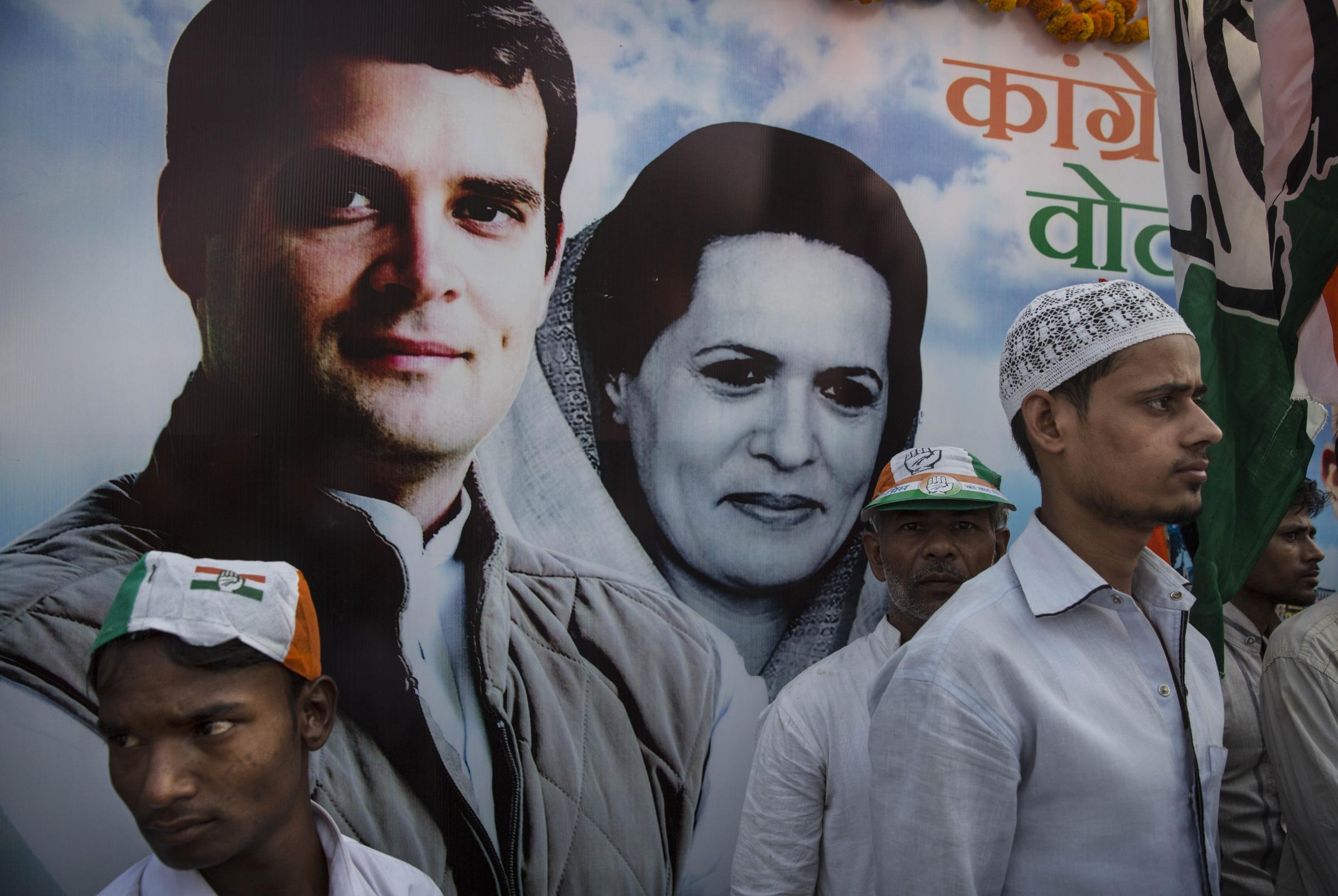
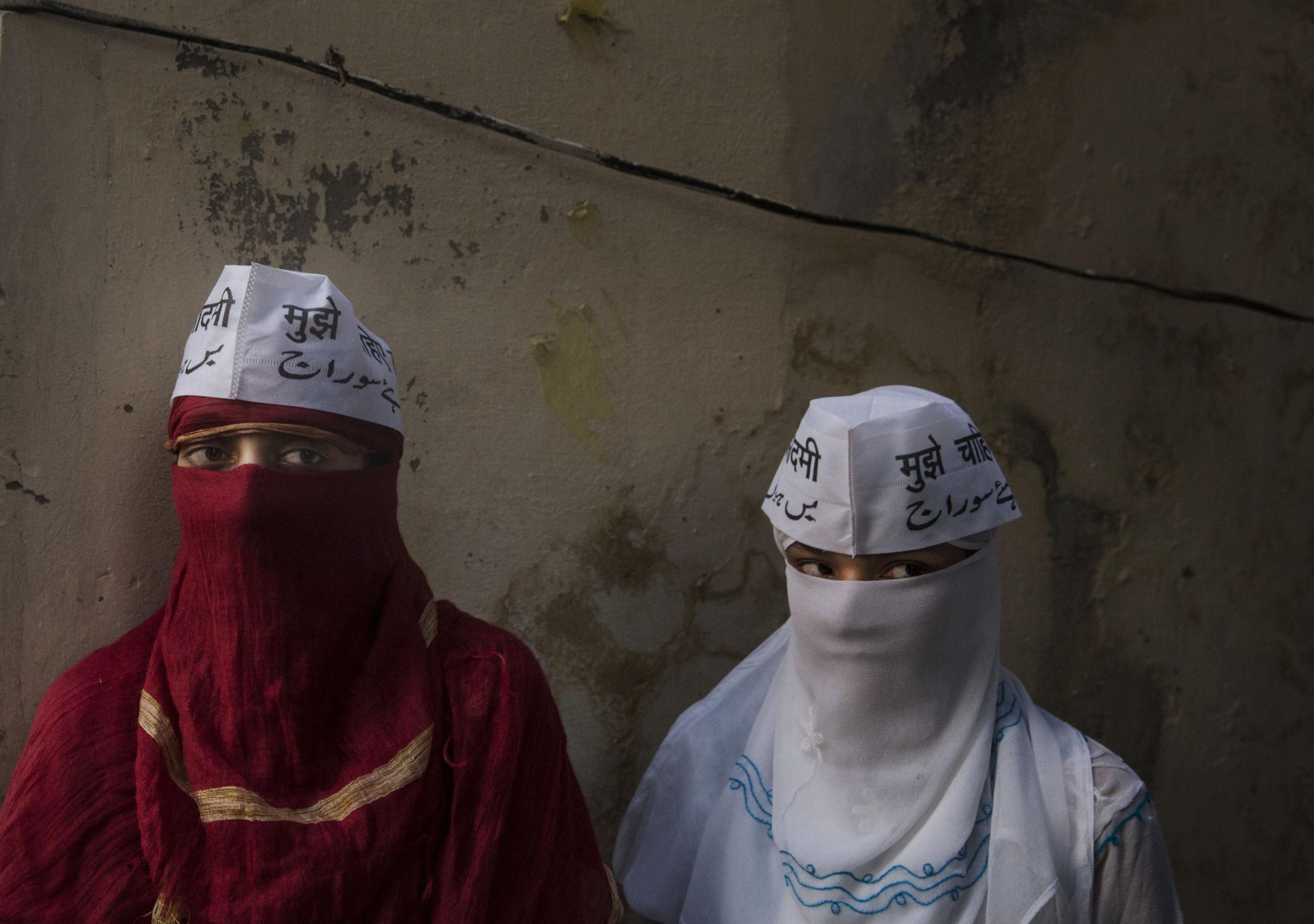
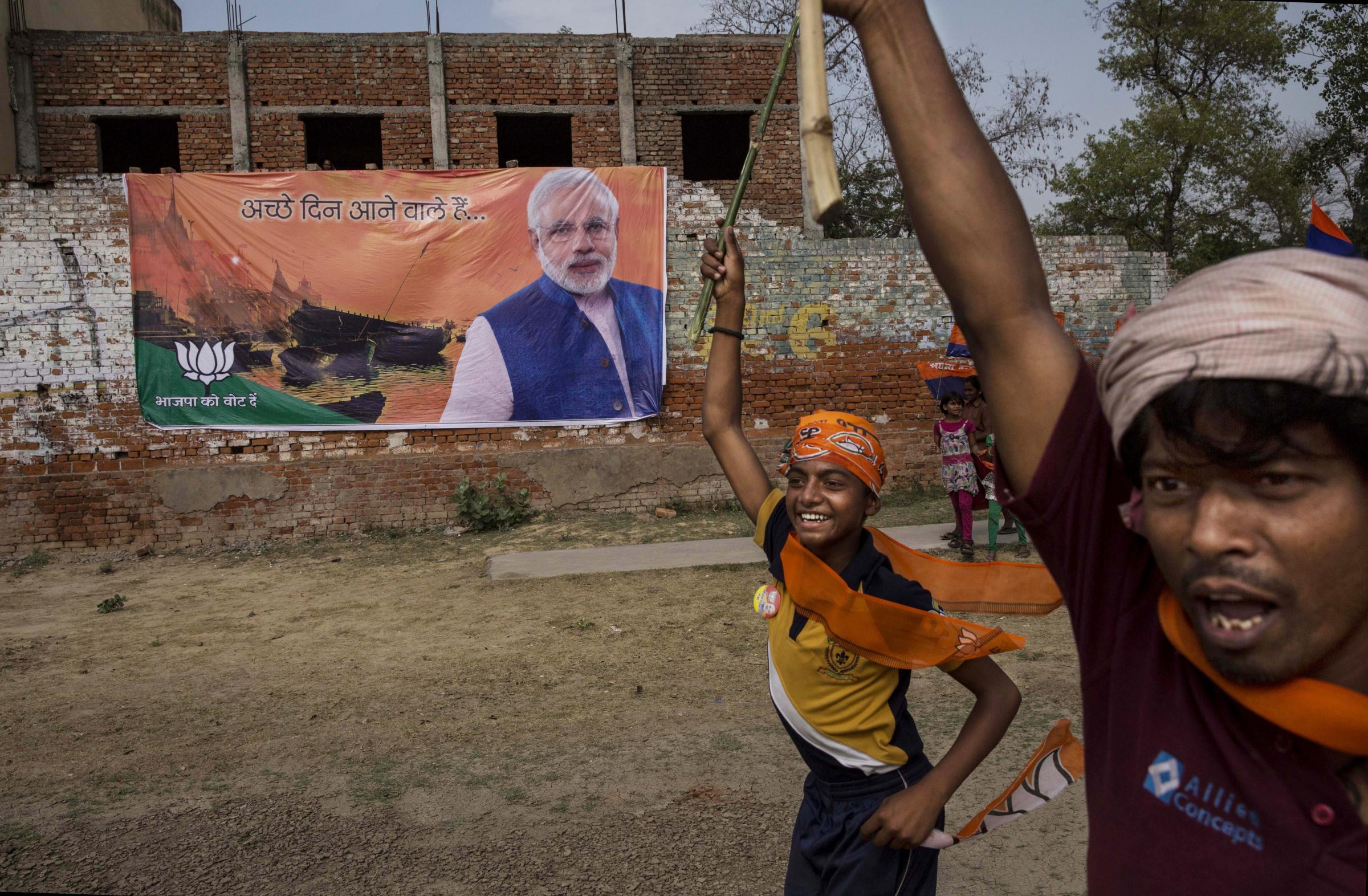
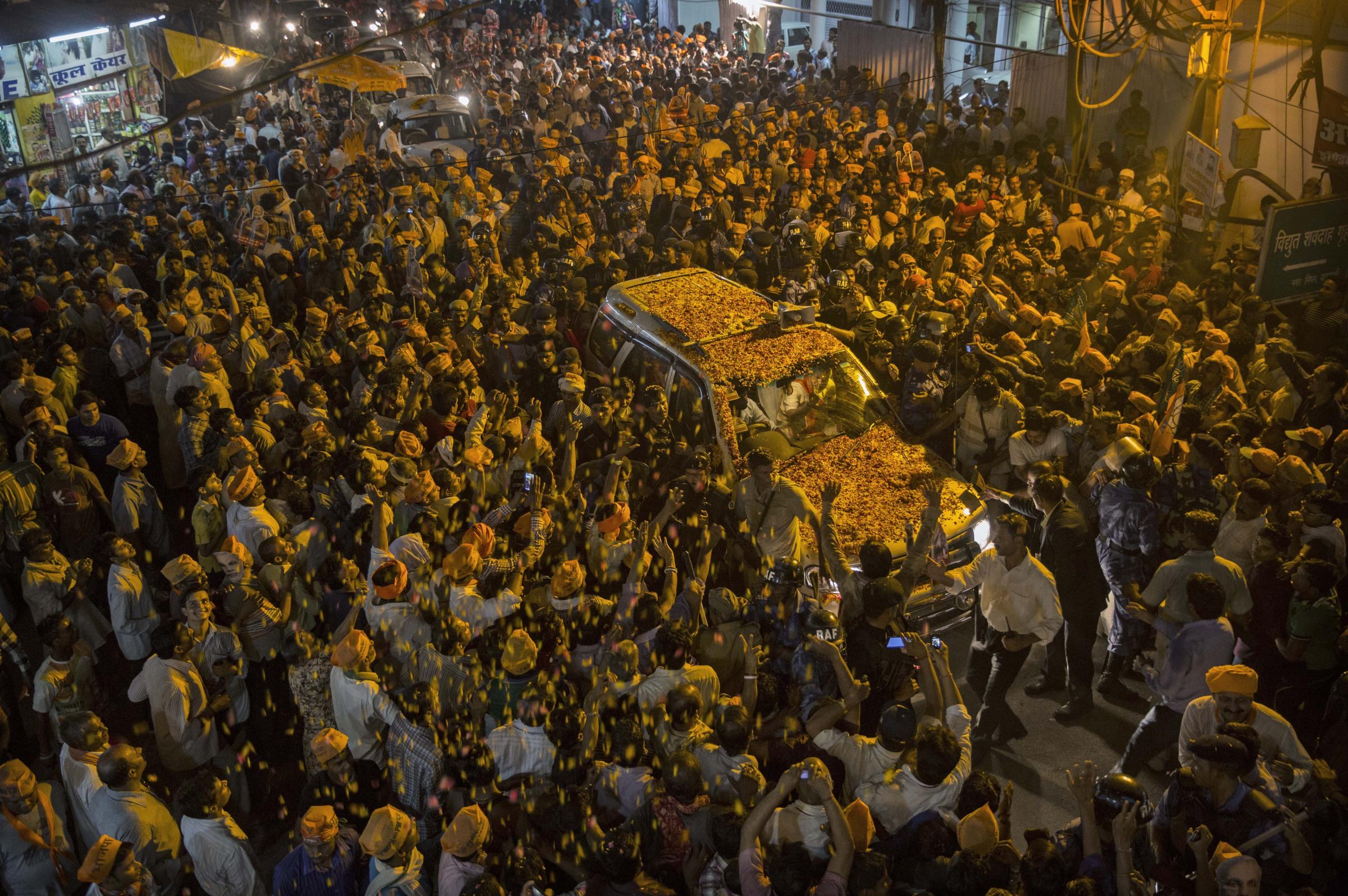
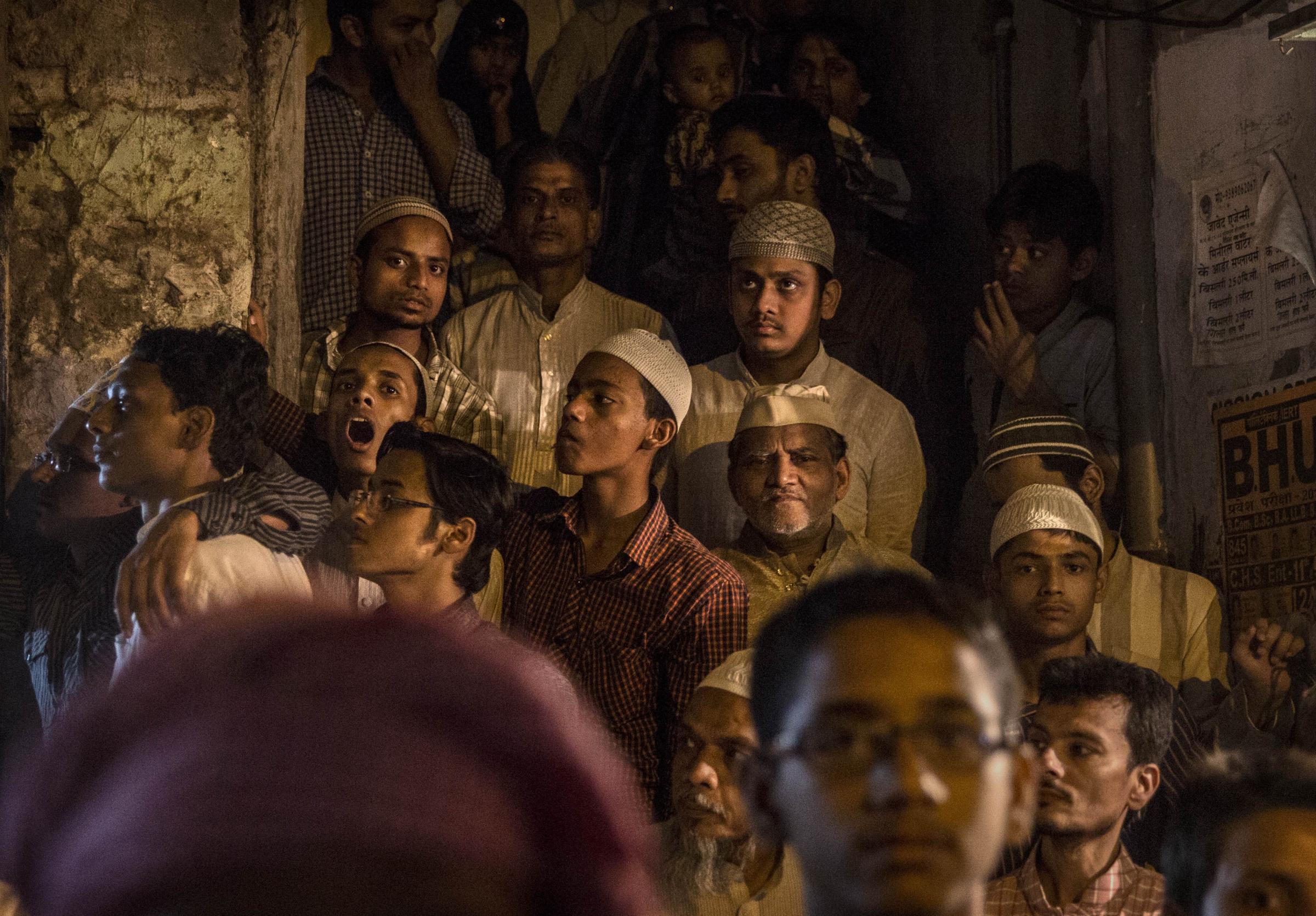
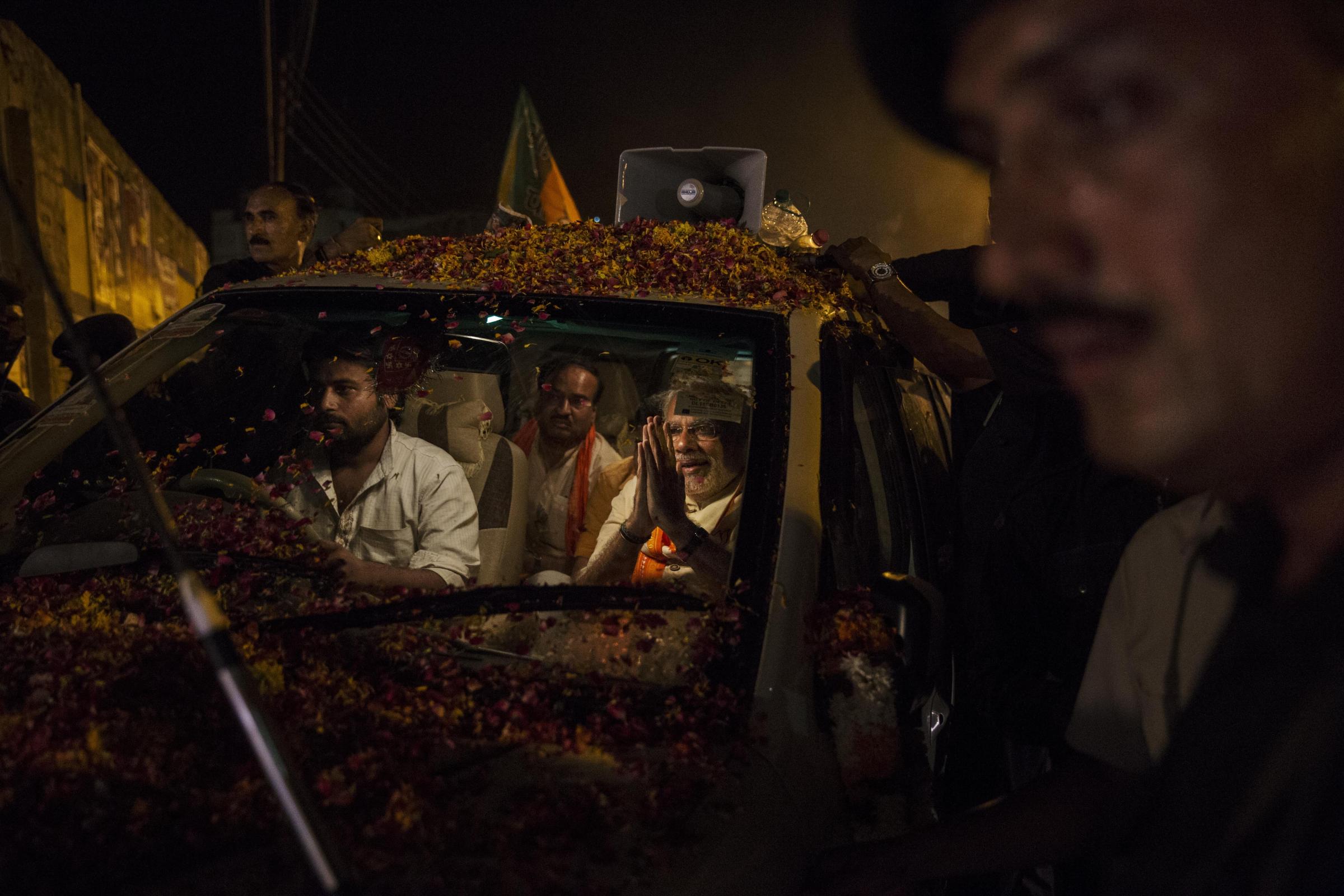
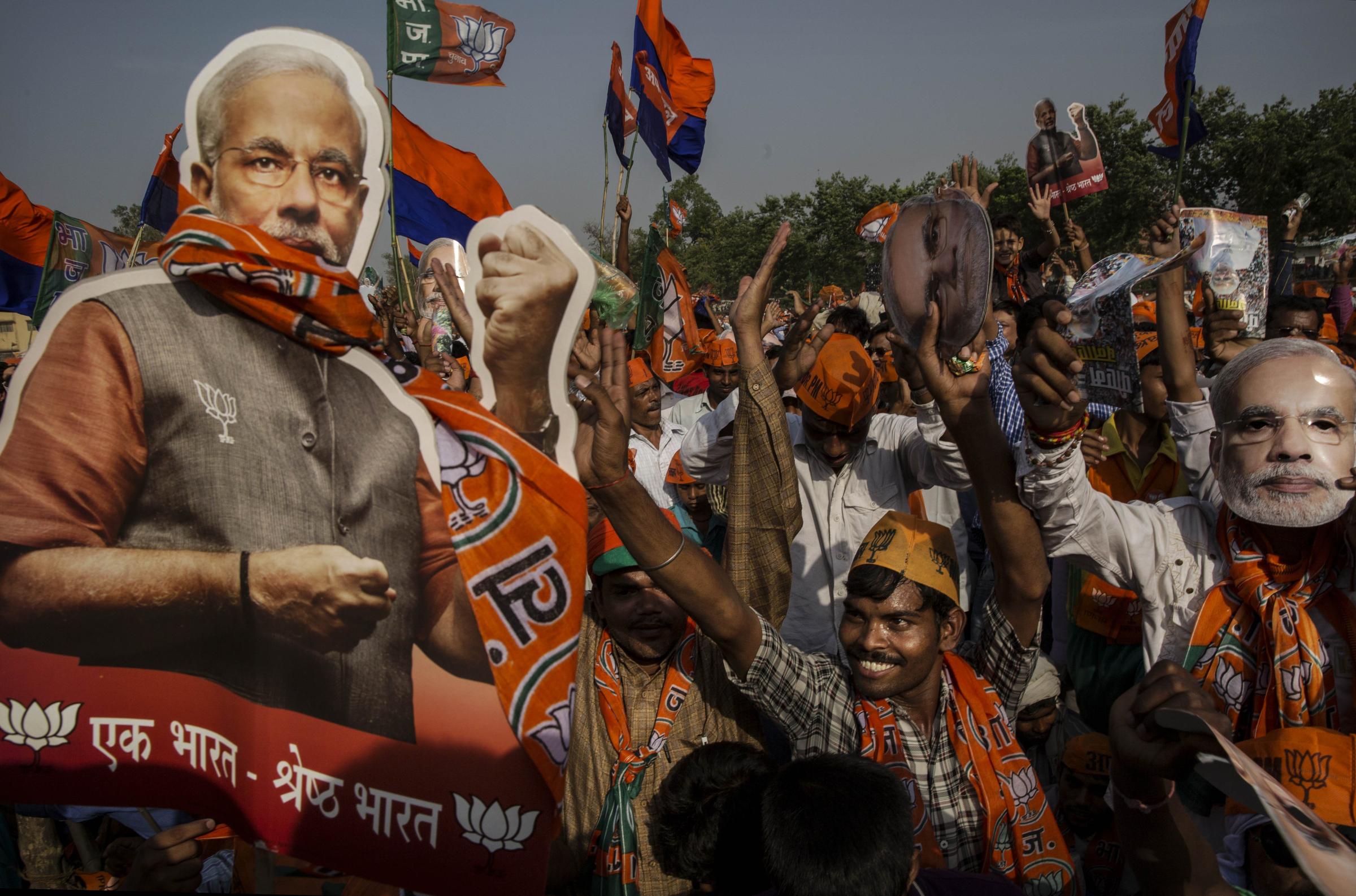




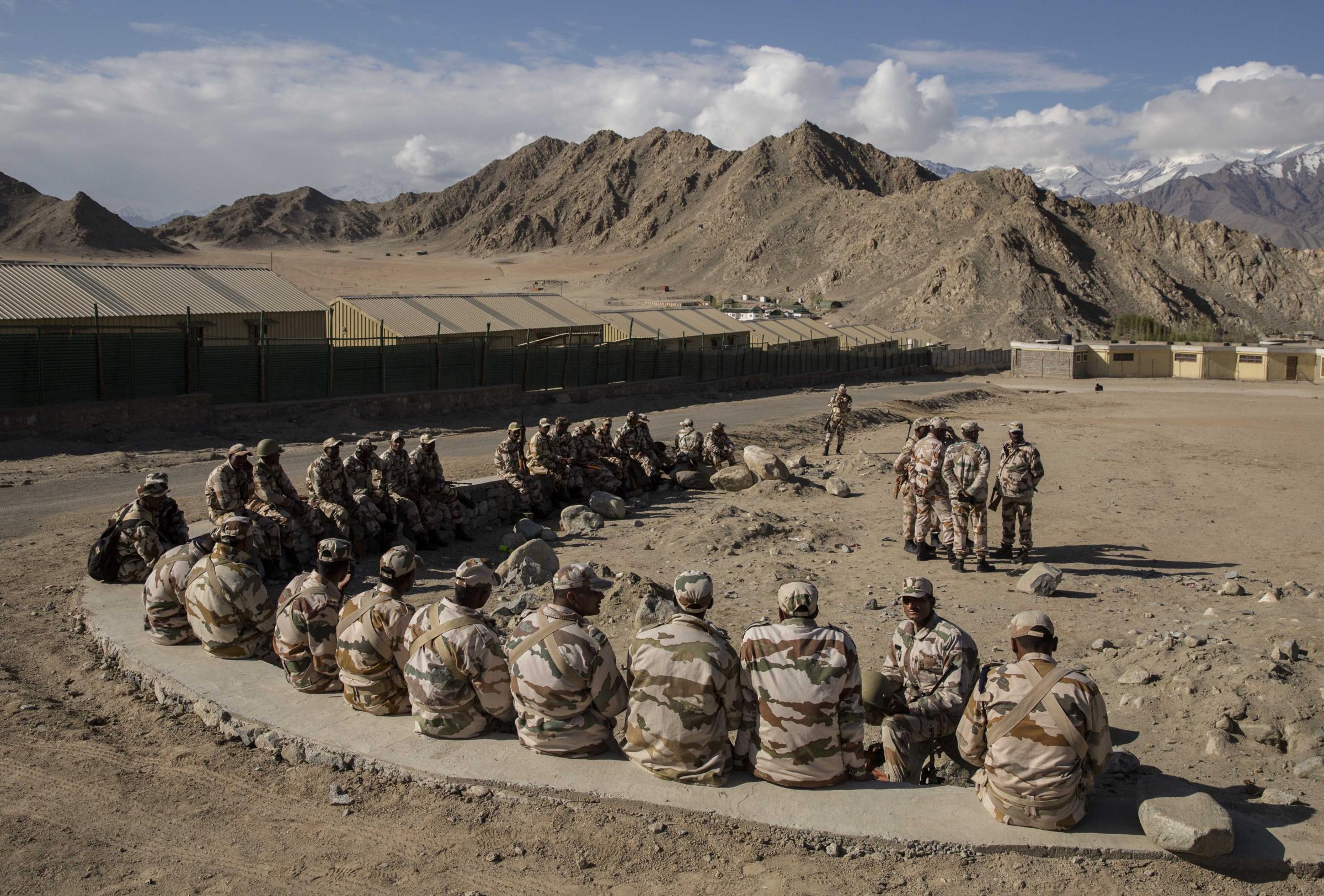
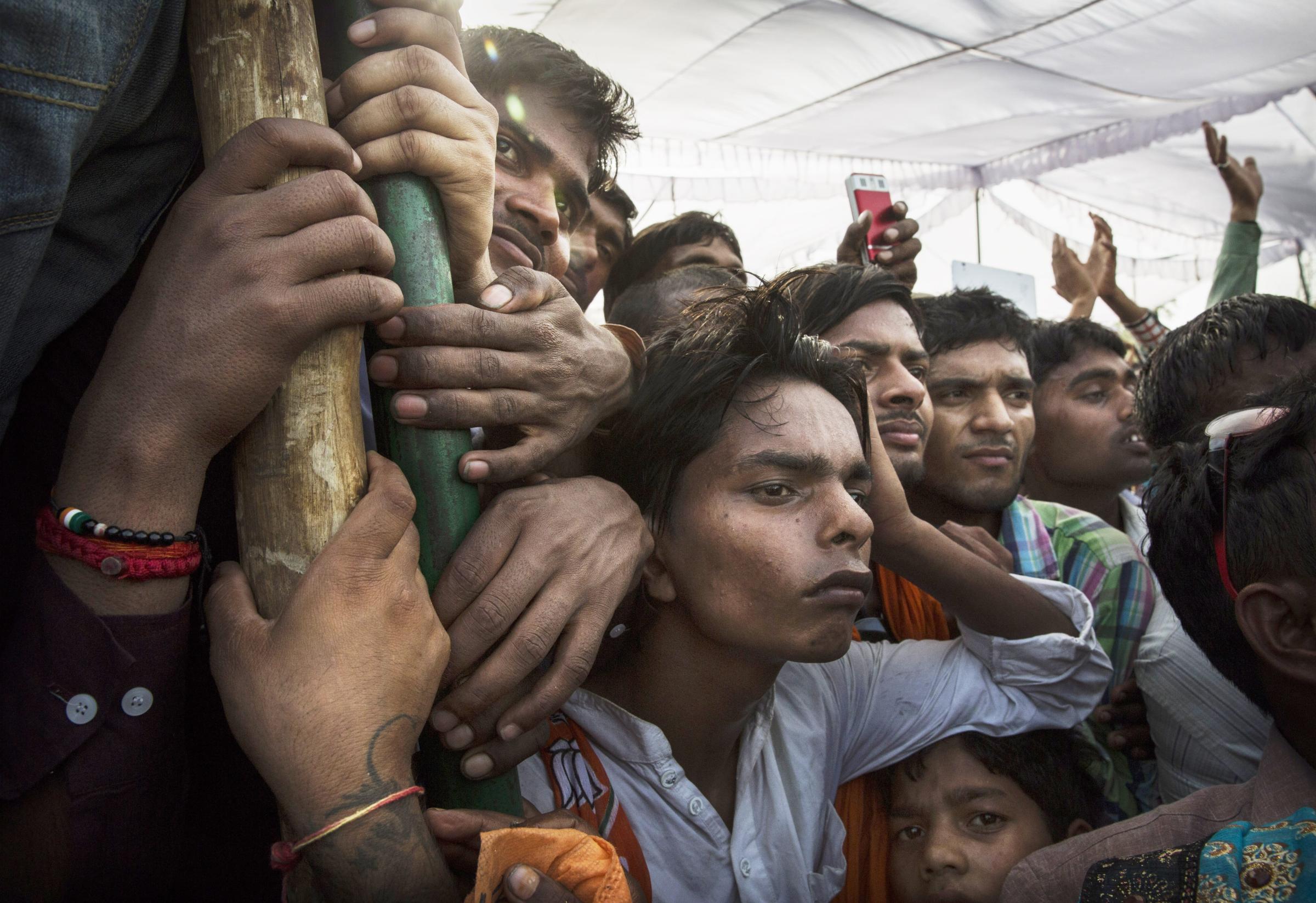
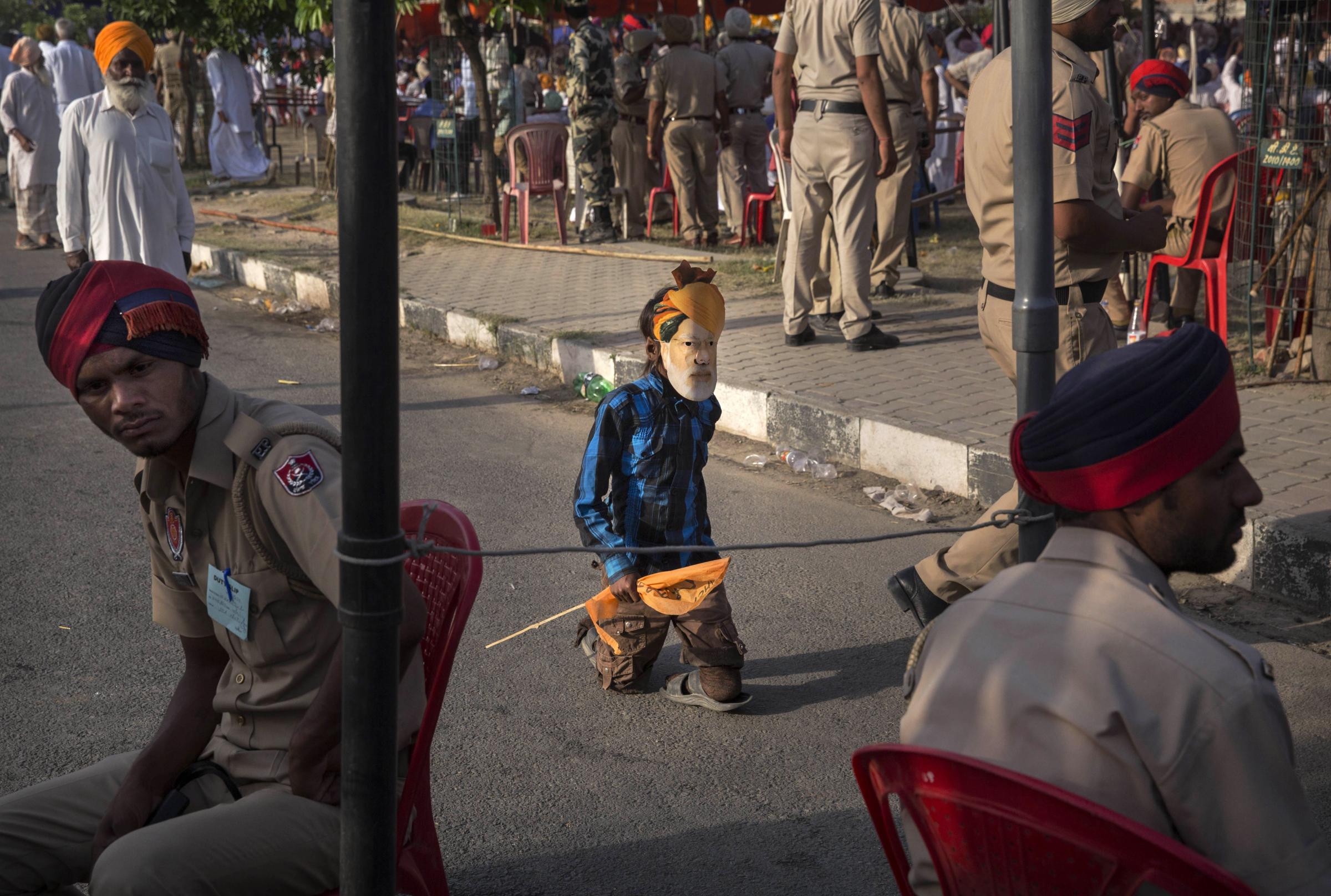
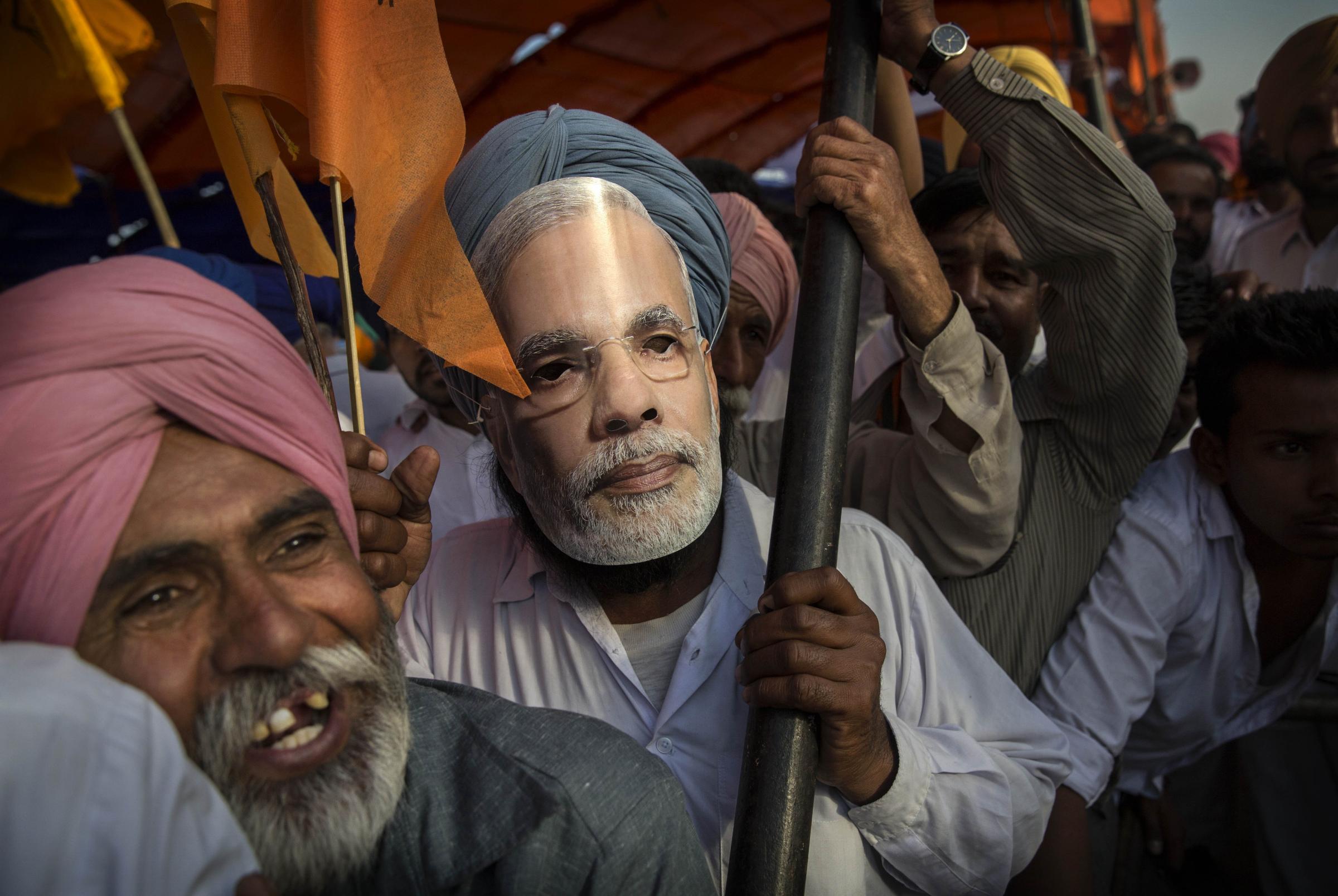
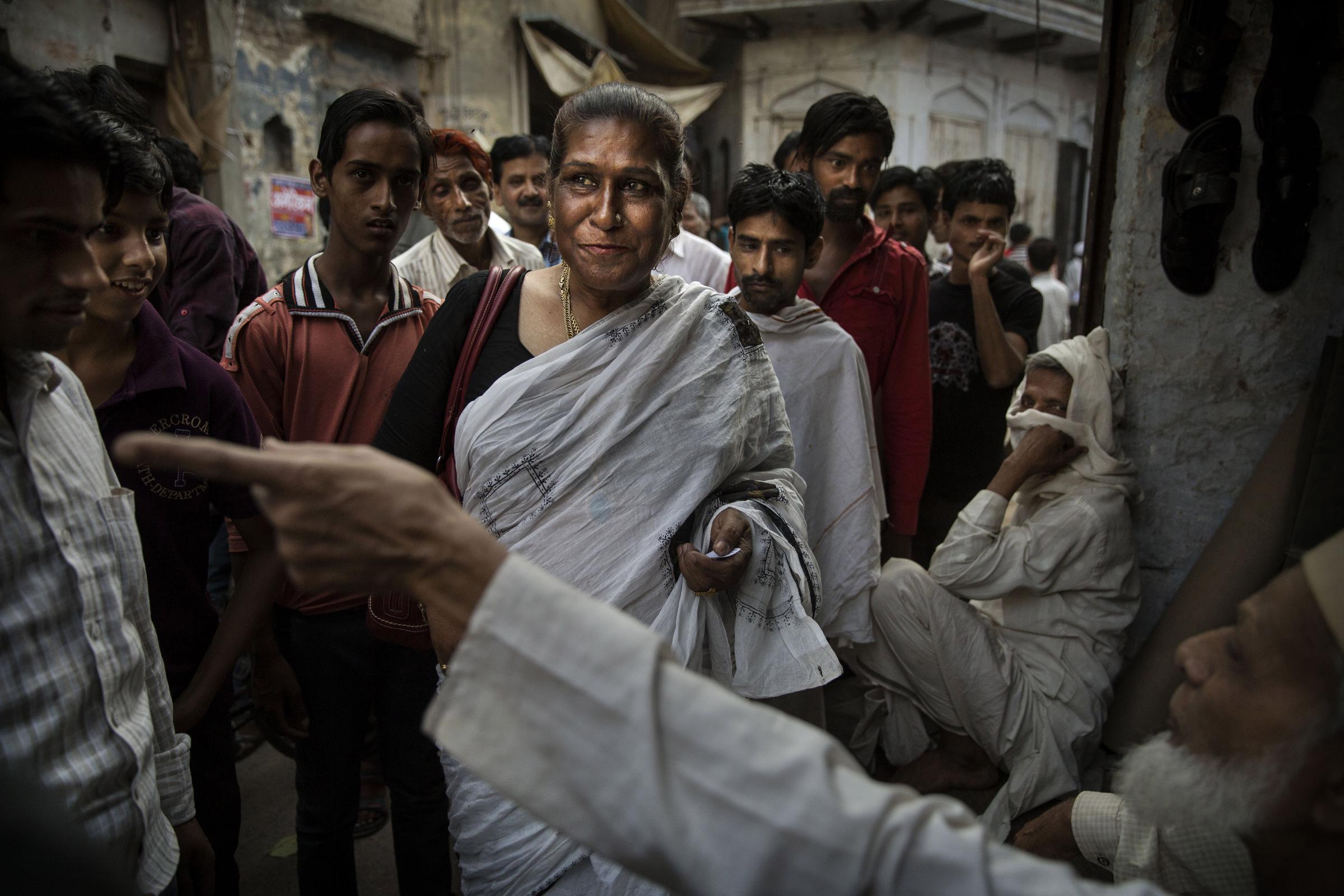
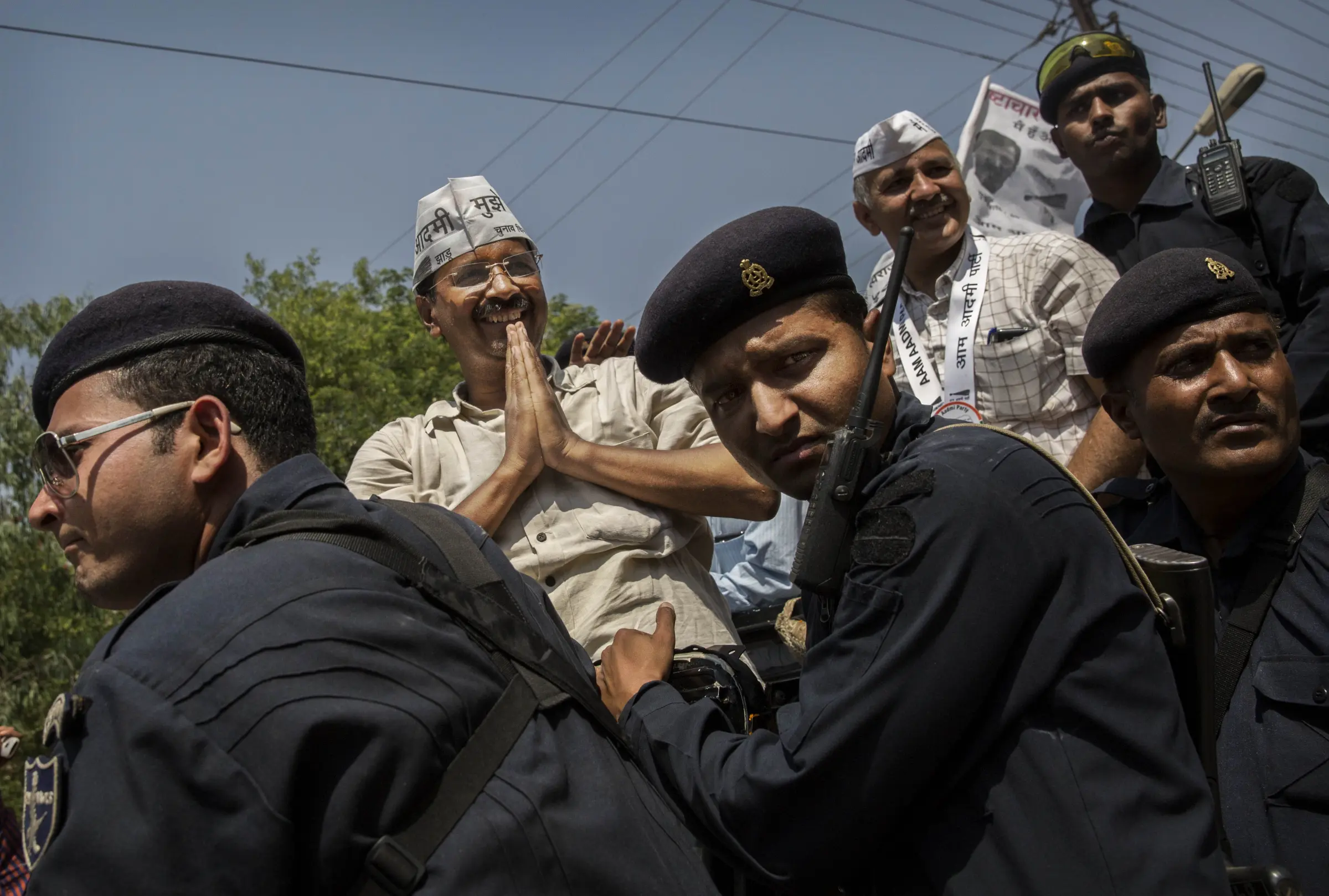



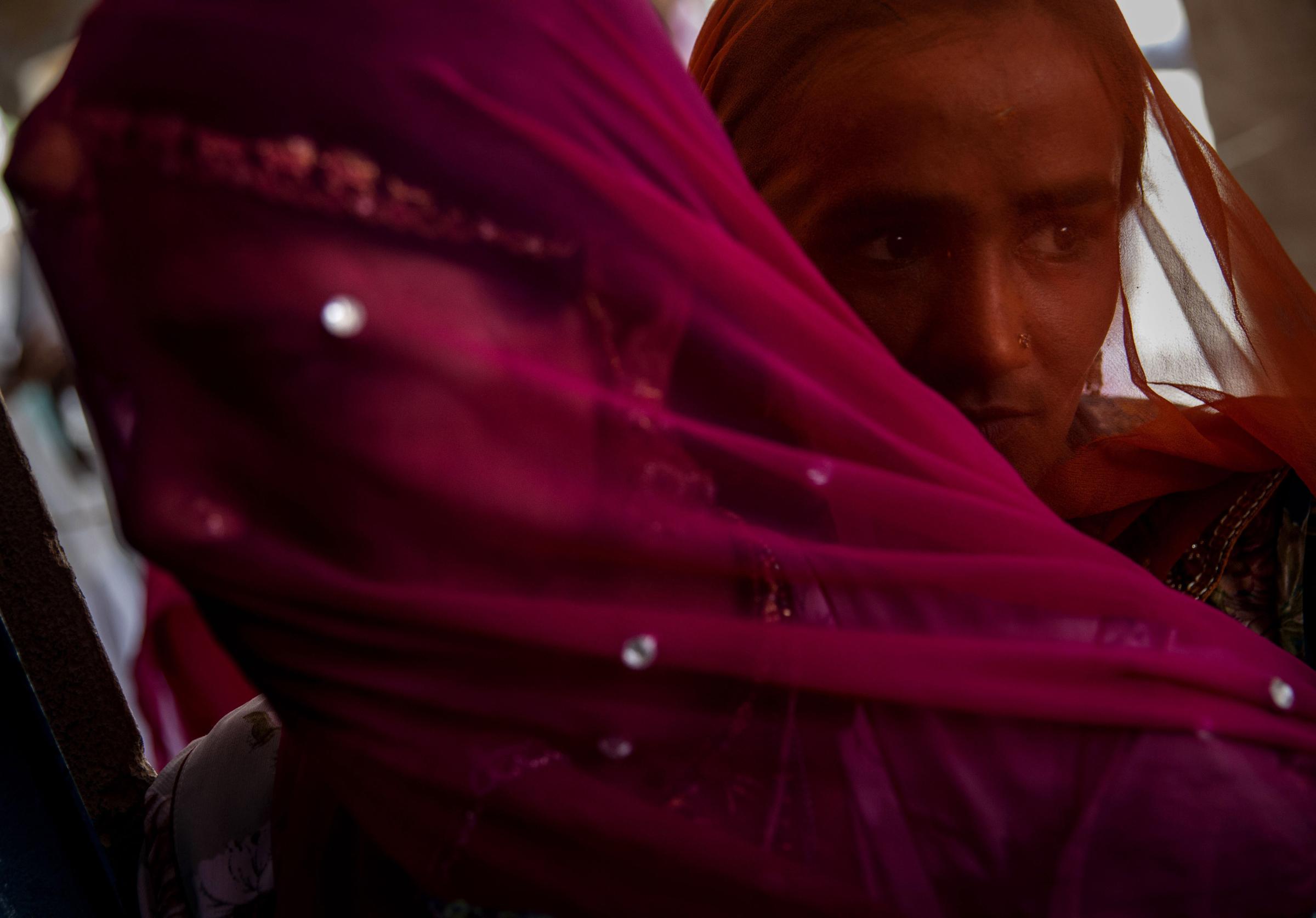
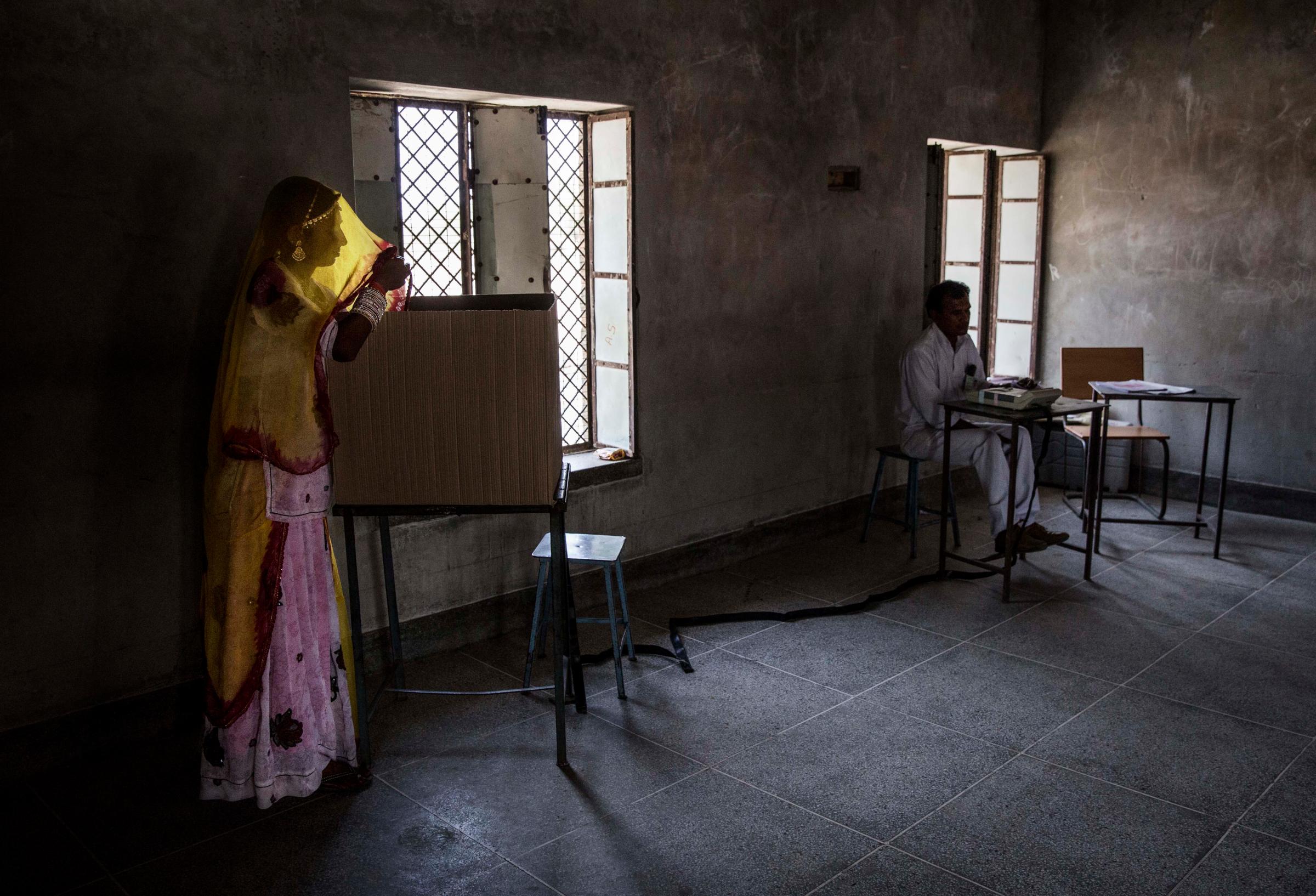
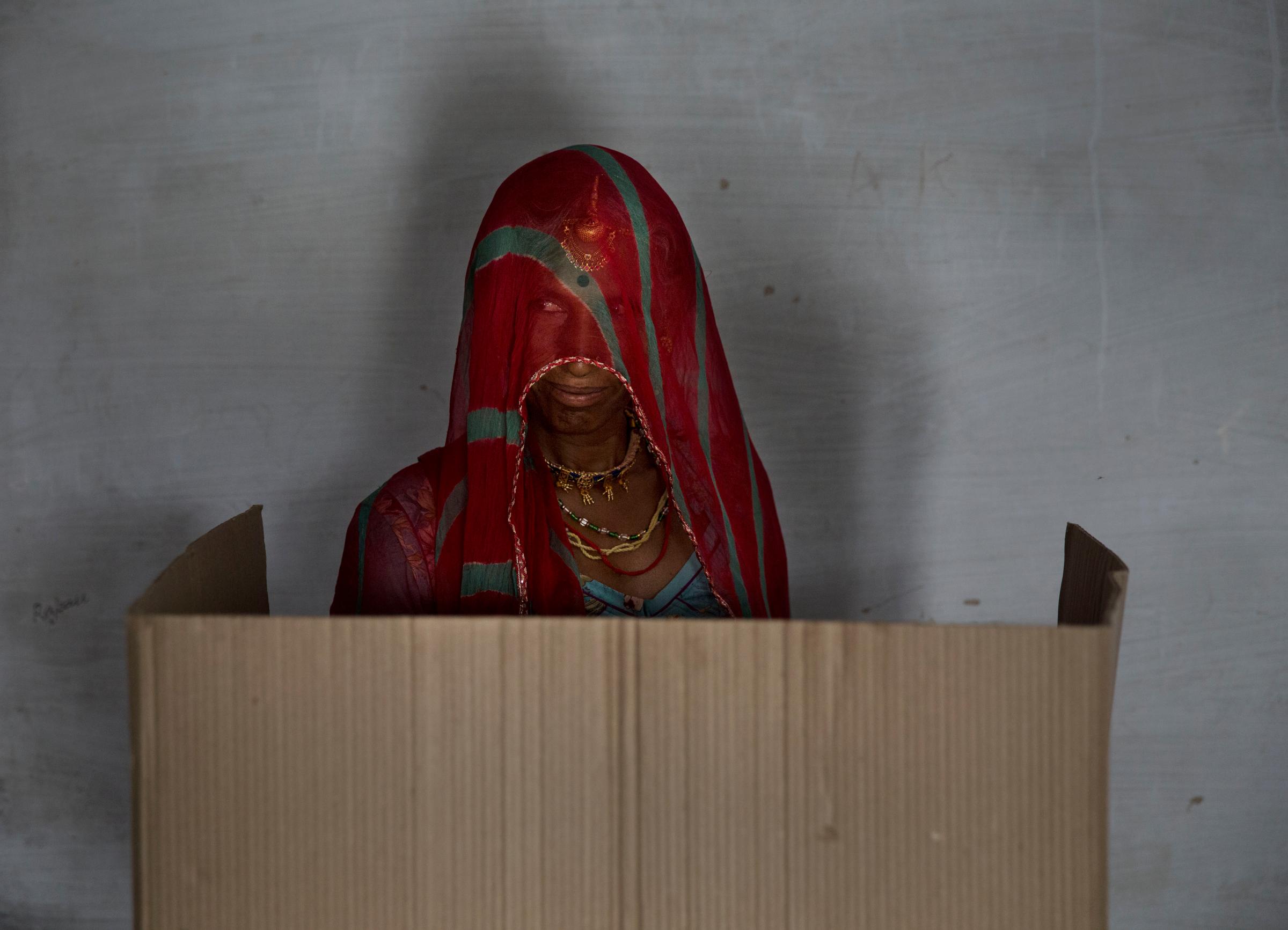
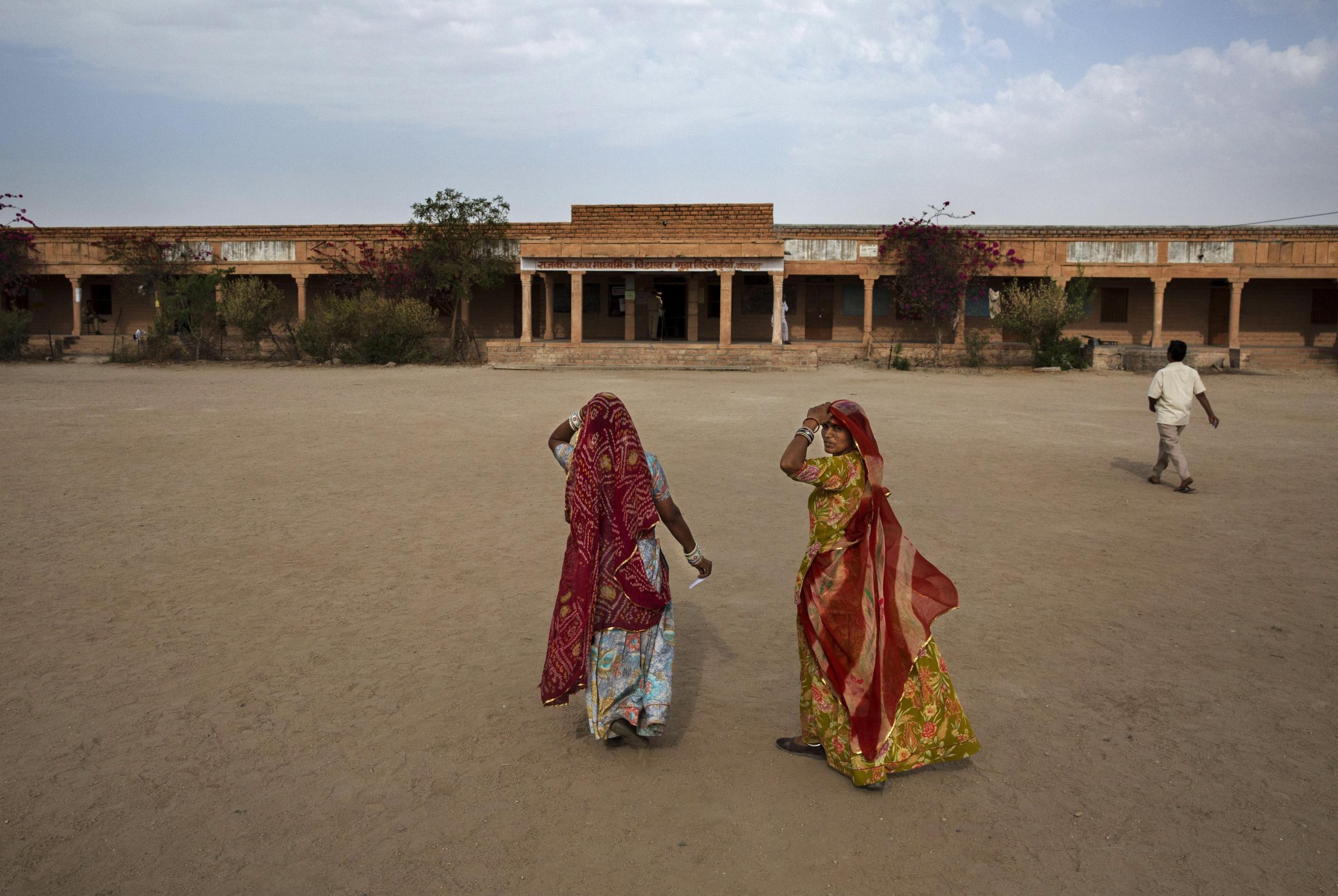
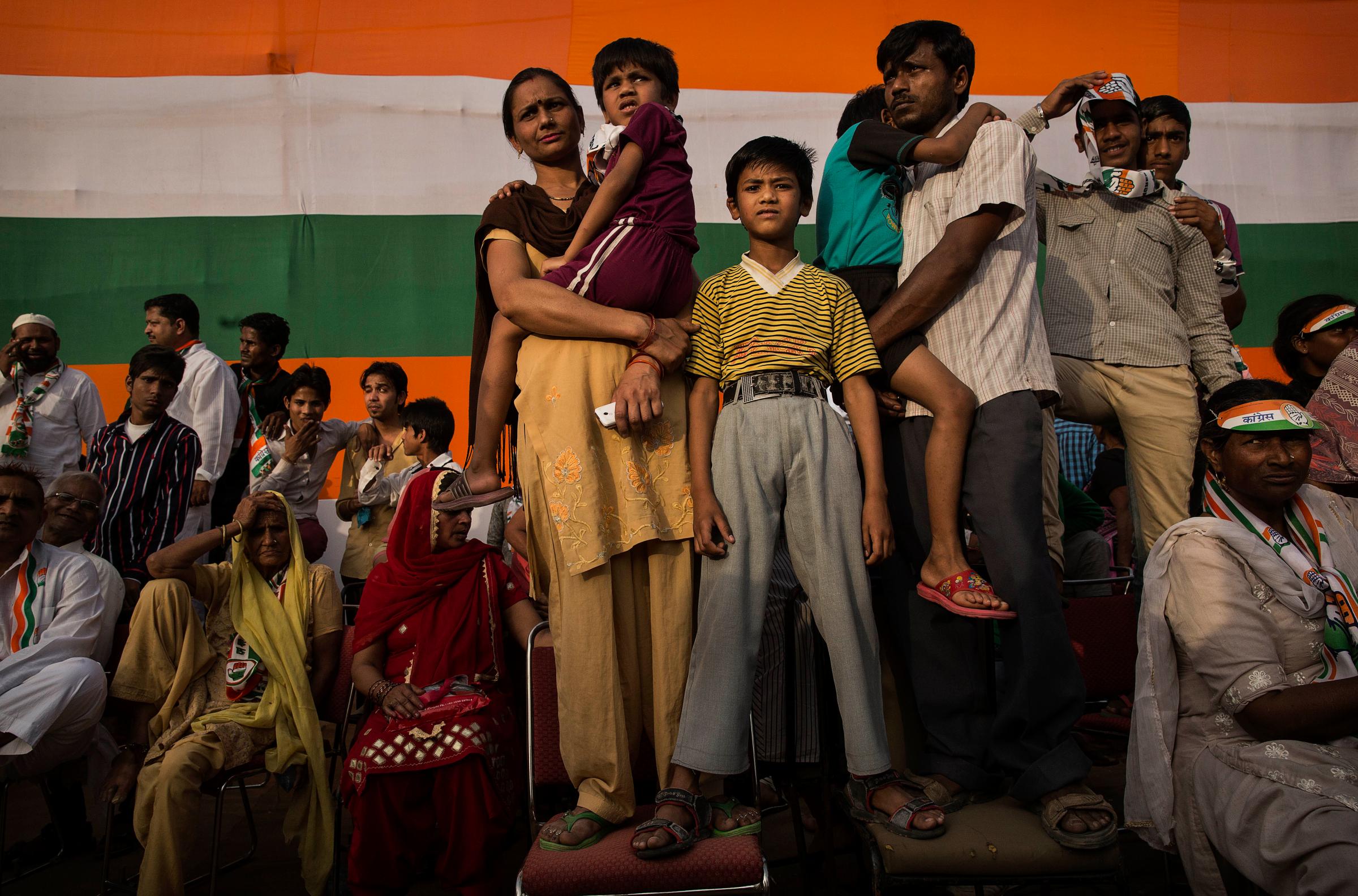
More Must-Reads from TIME
- Cybersecurity Experts Are Sounding the Alarm on DOGE
- Meet the 2025 Women of the Year
- The Harsh Truth About Disability Inclusion
- Why Do More Young Adults Have Cancer?
- Colman Domingo Leads With Radical Love
- How to Get Better at Doing Things Alone
- Michelle Zauner Stares Down the Darkness
Contact us at letters@time.com